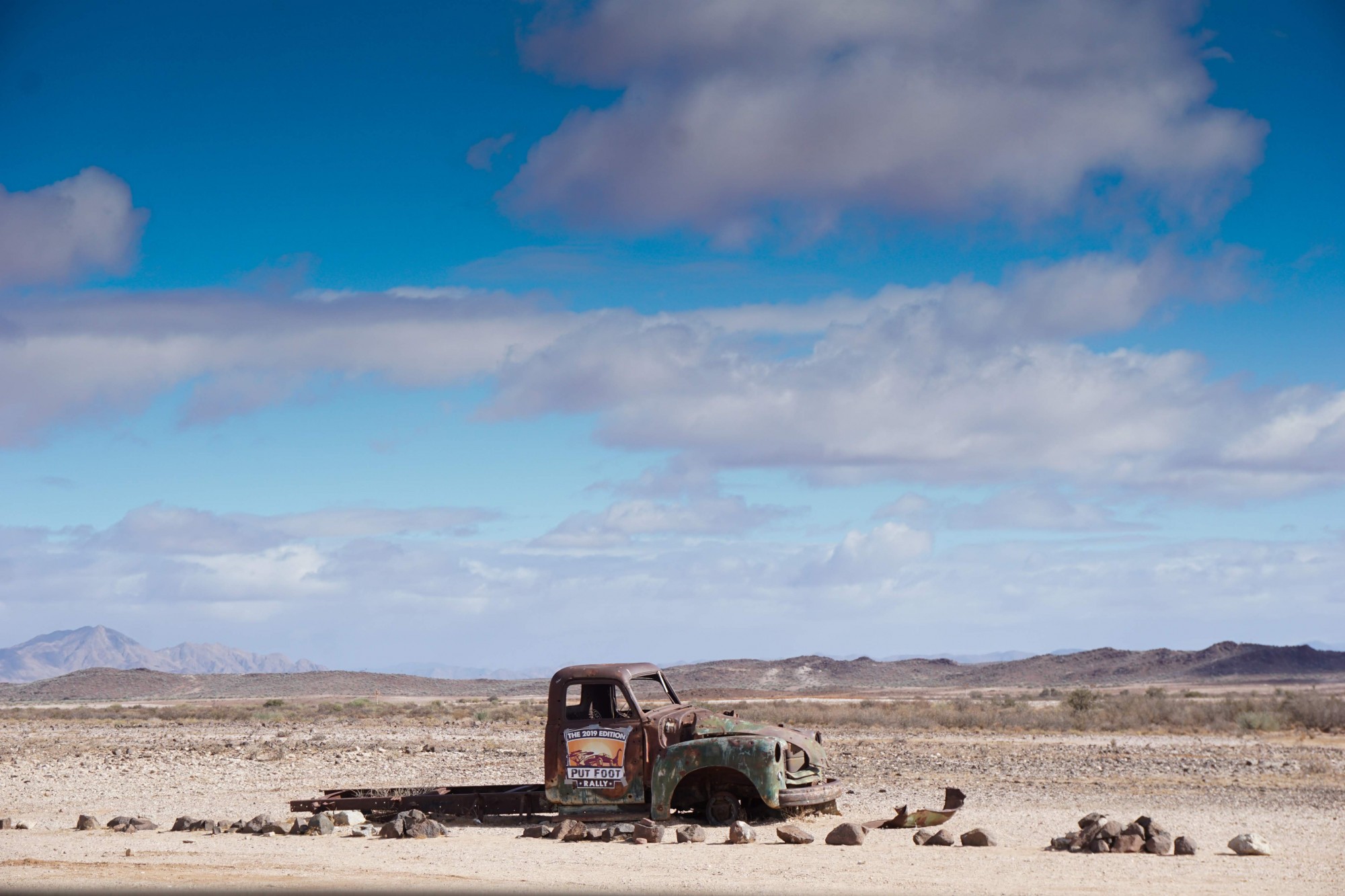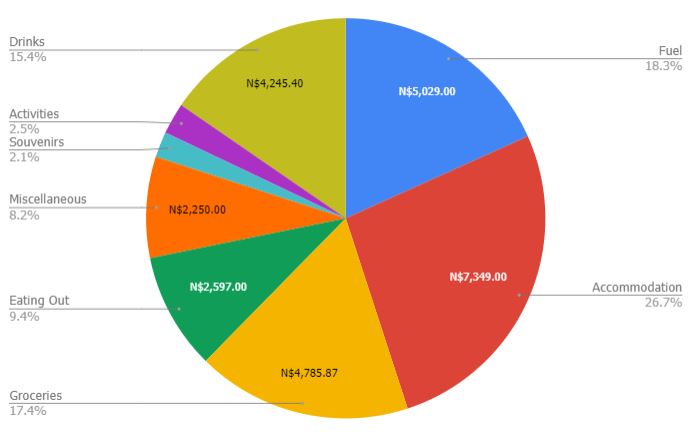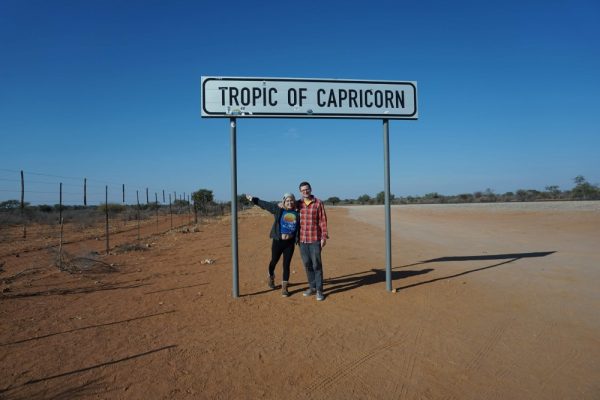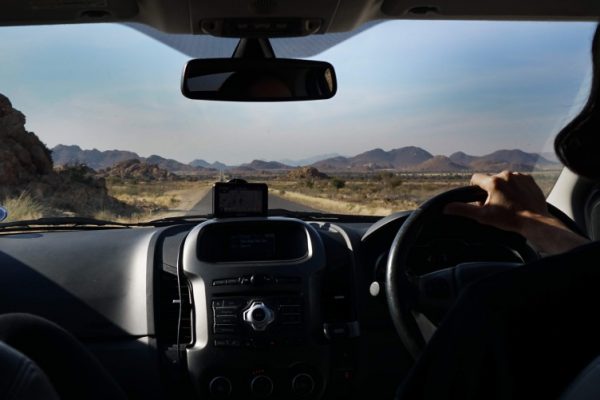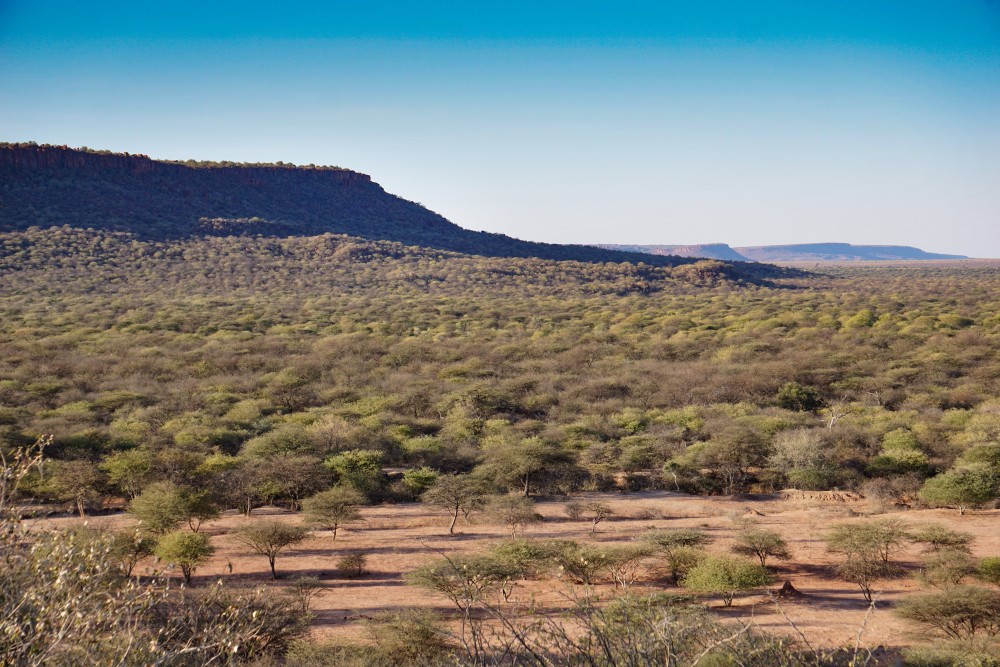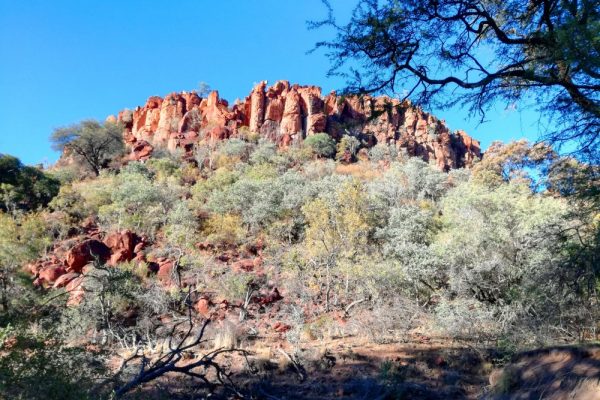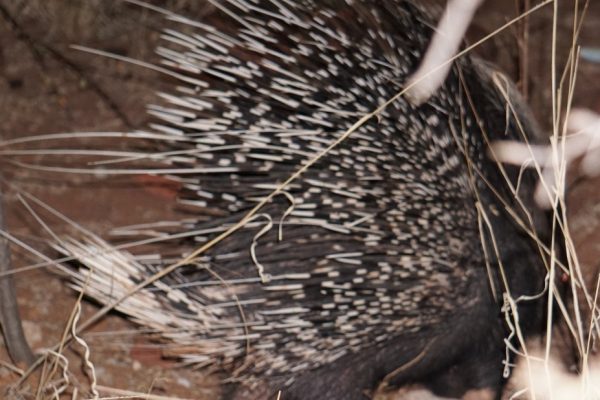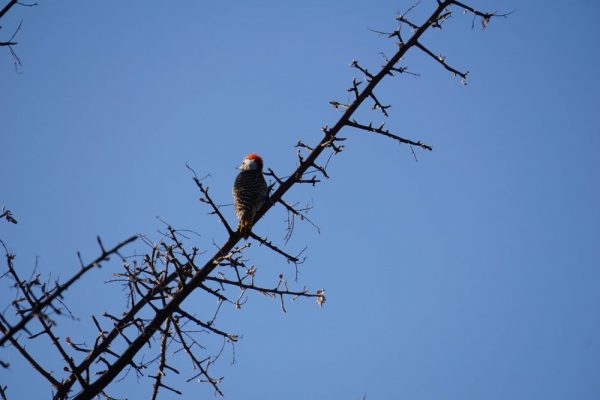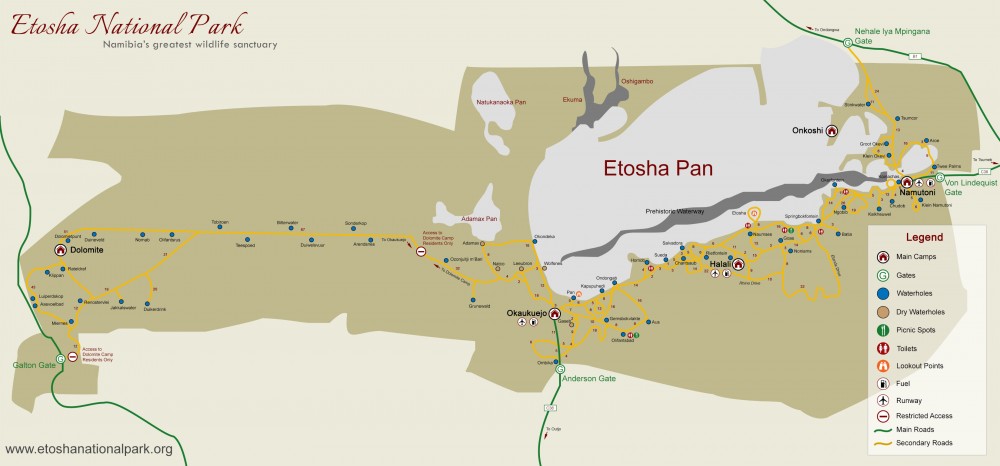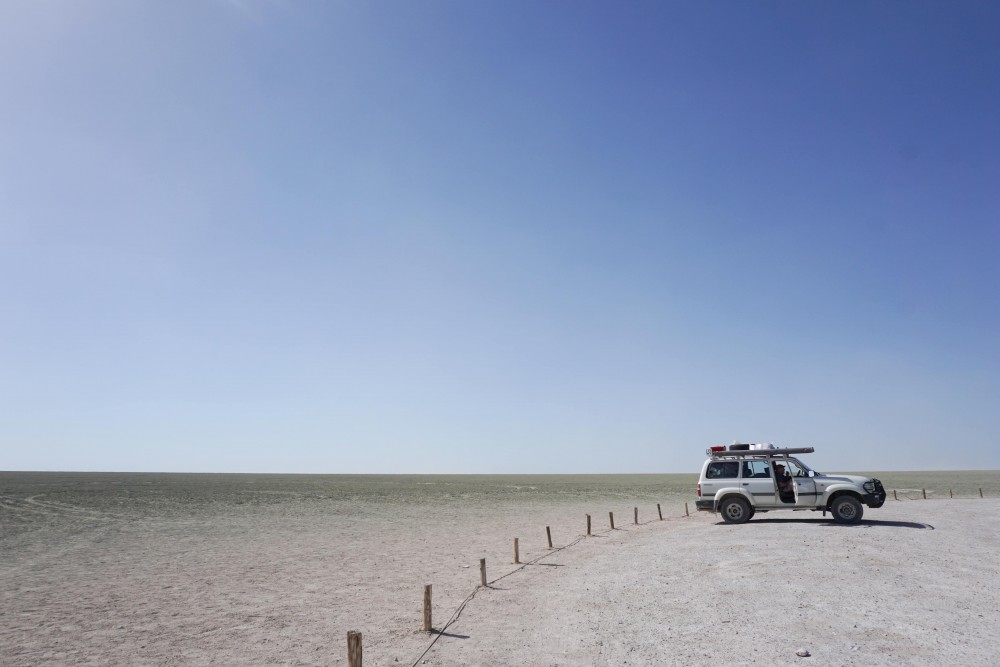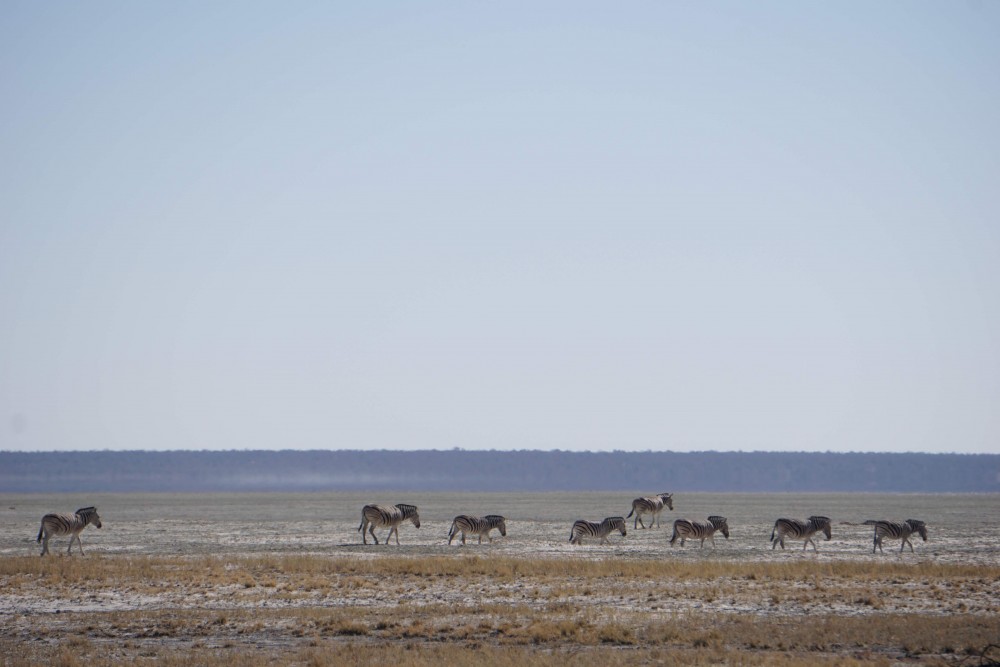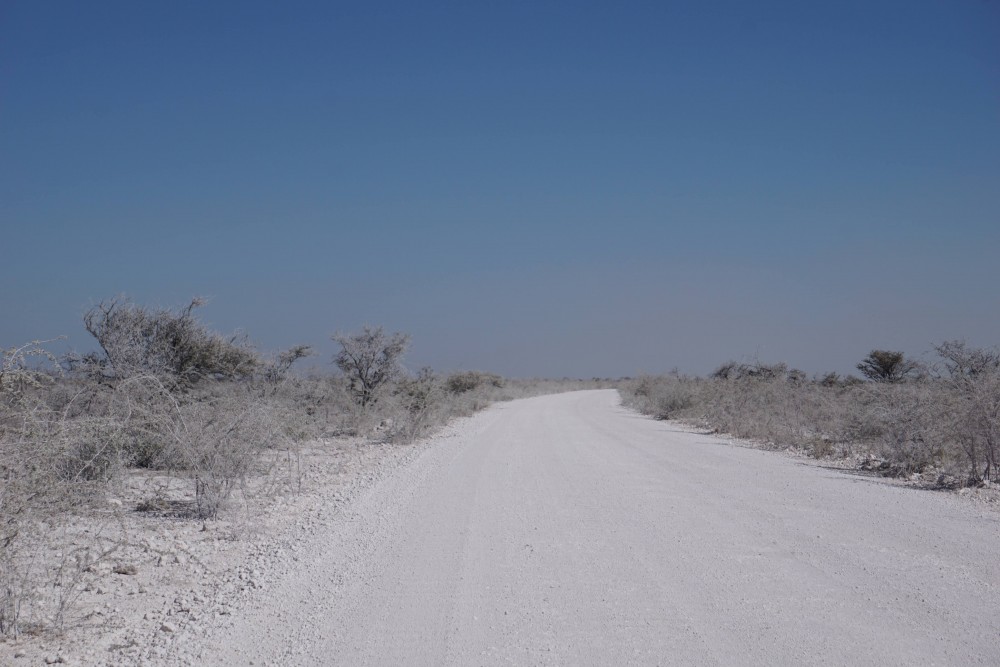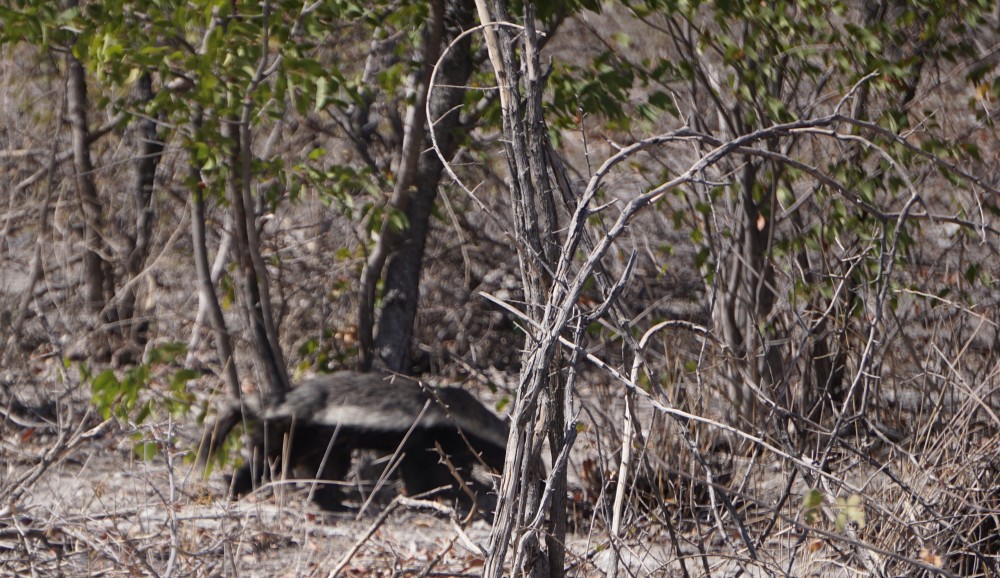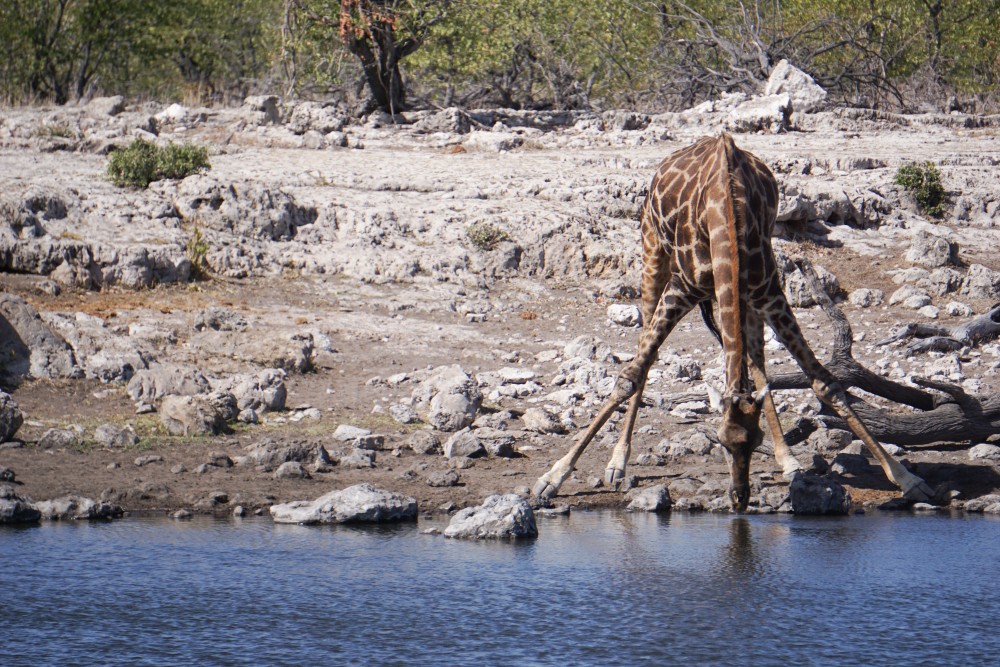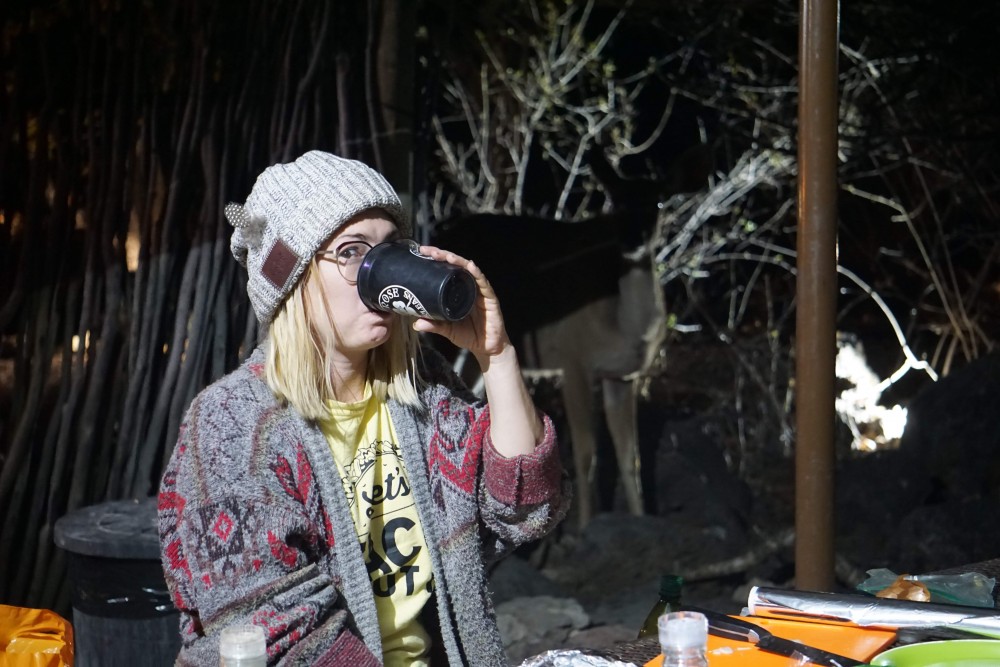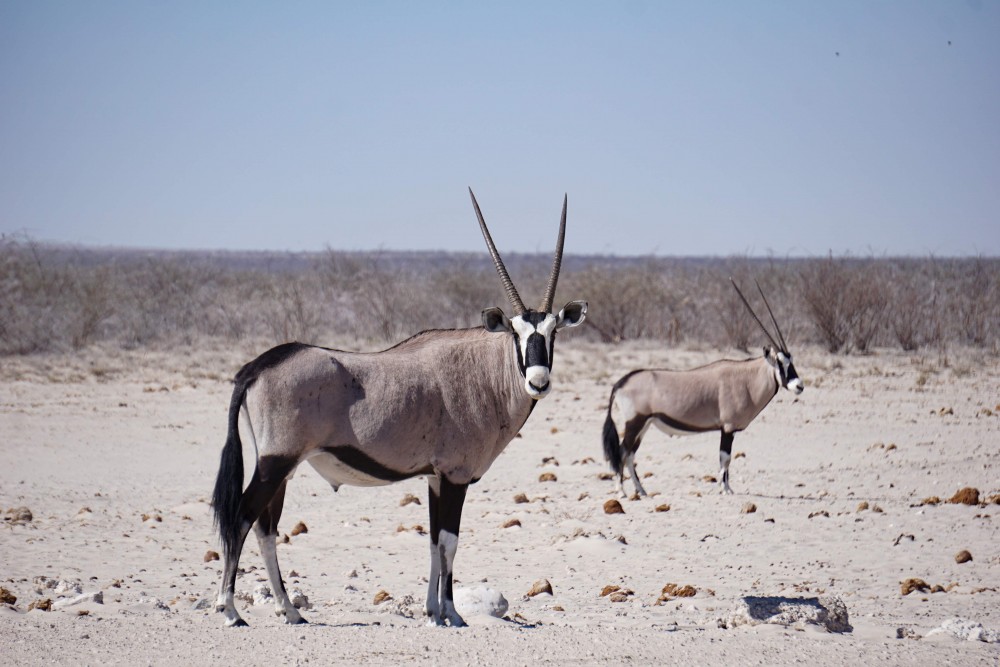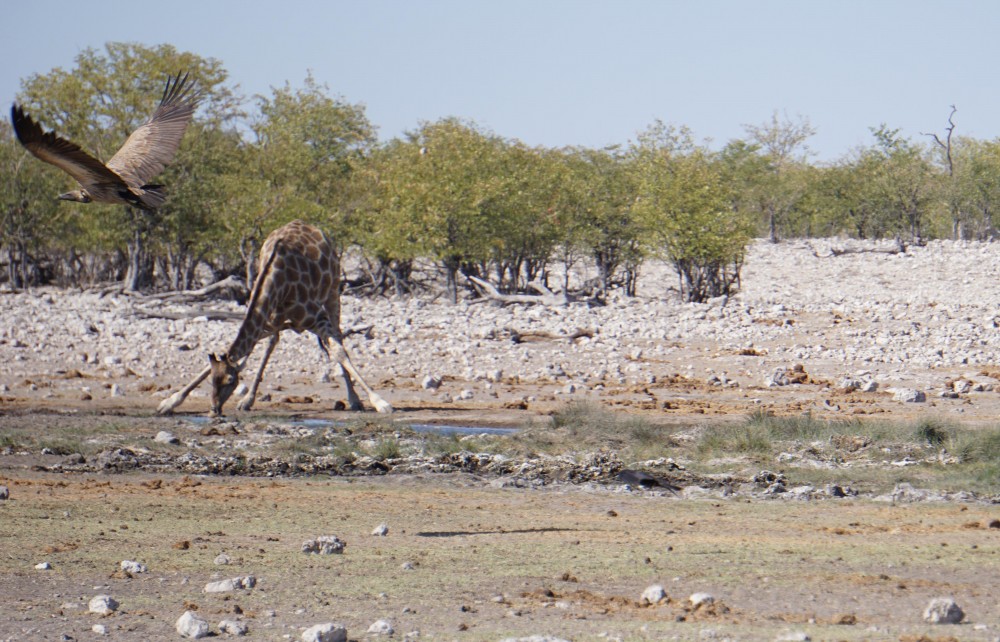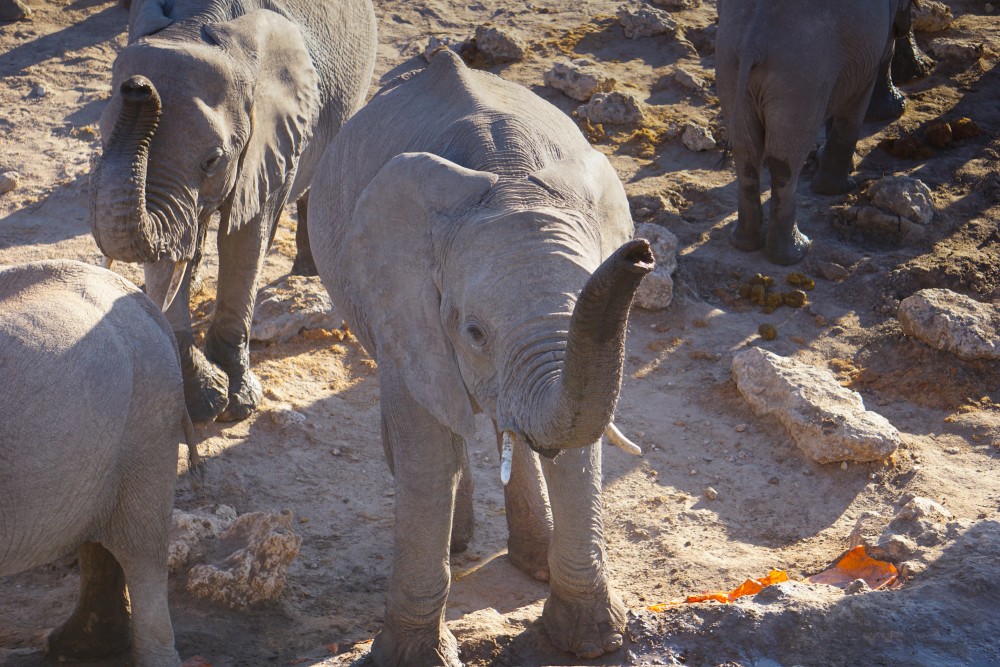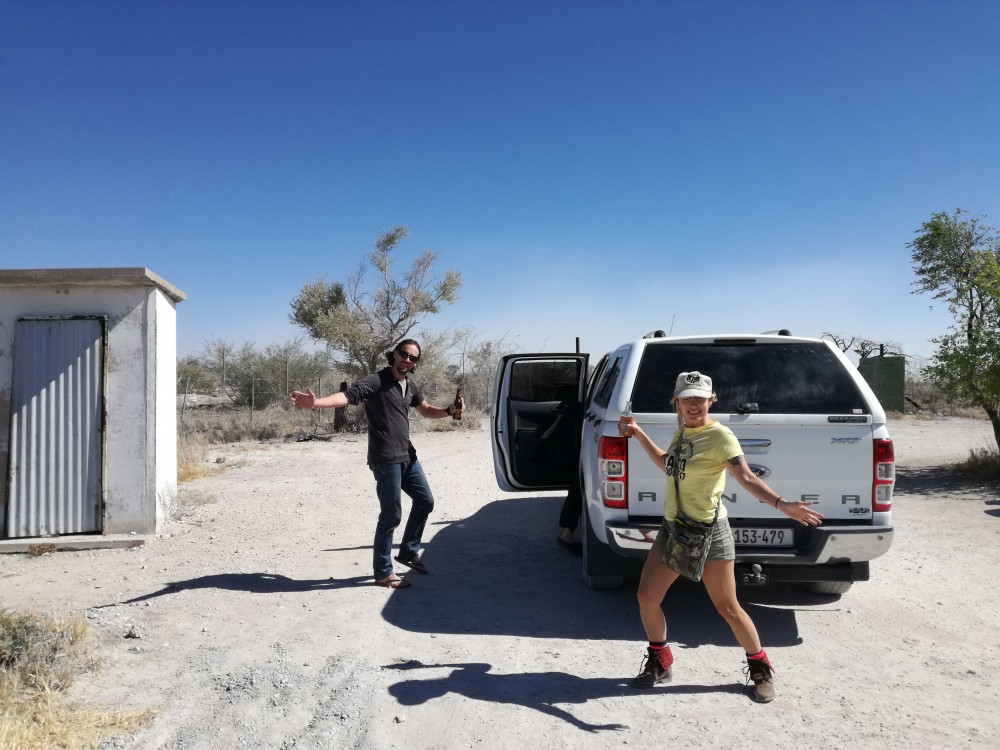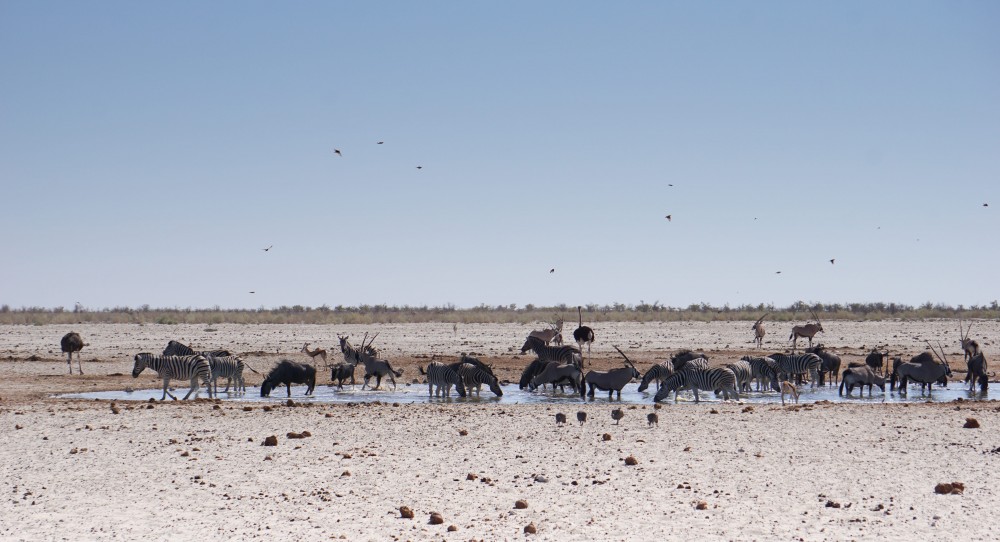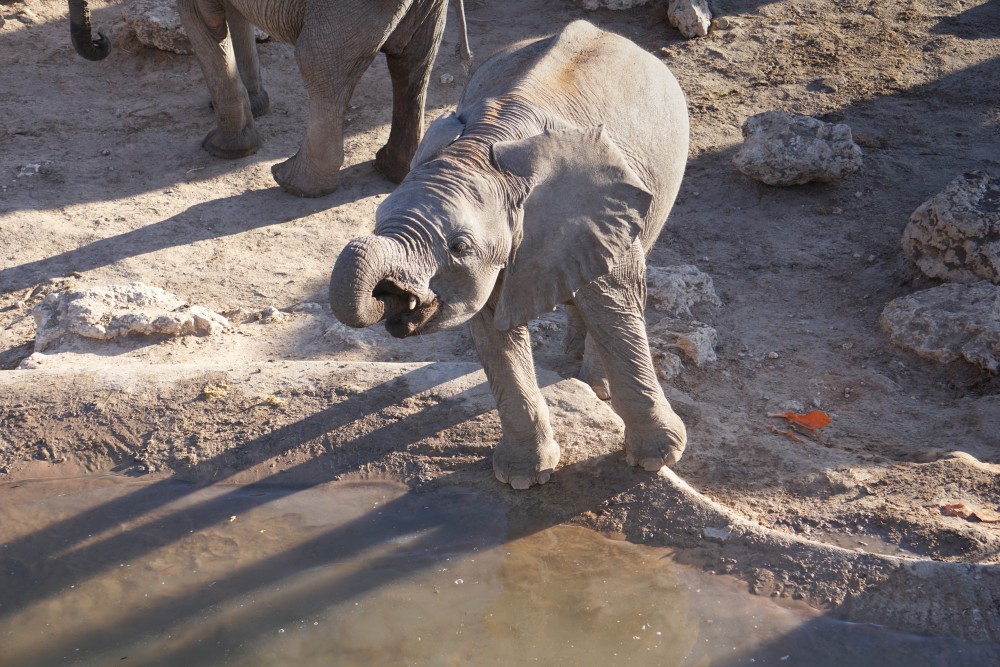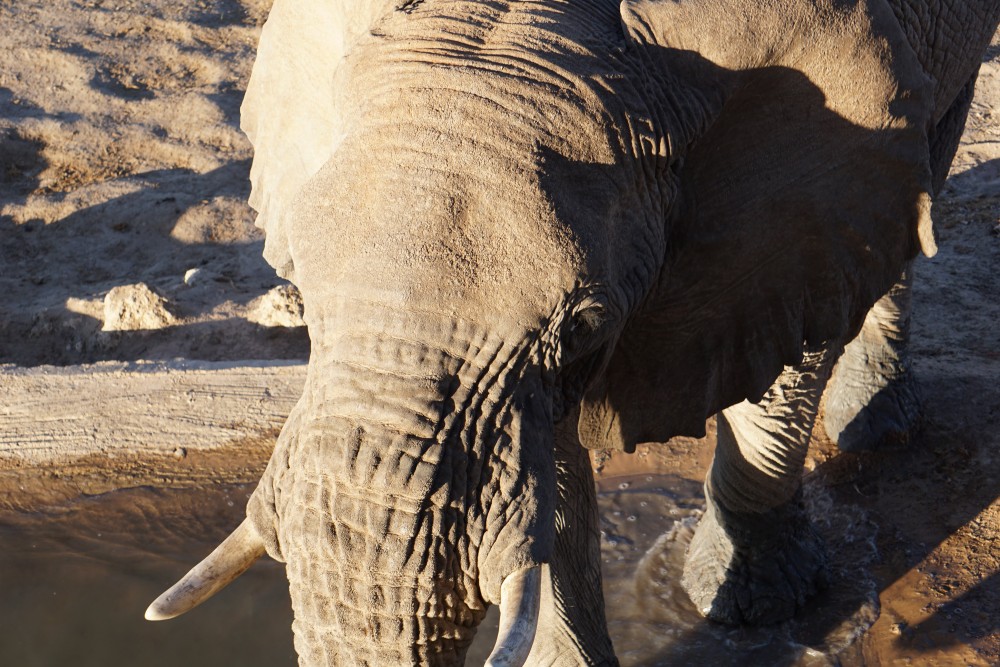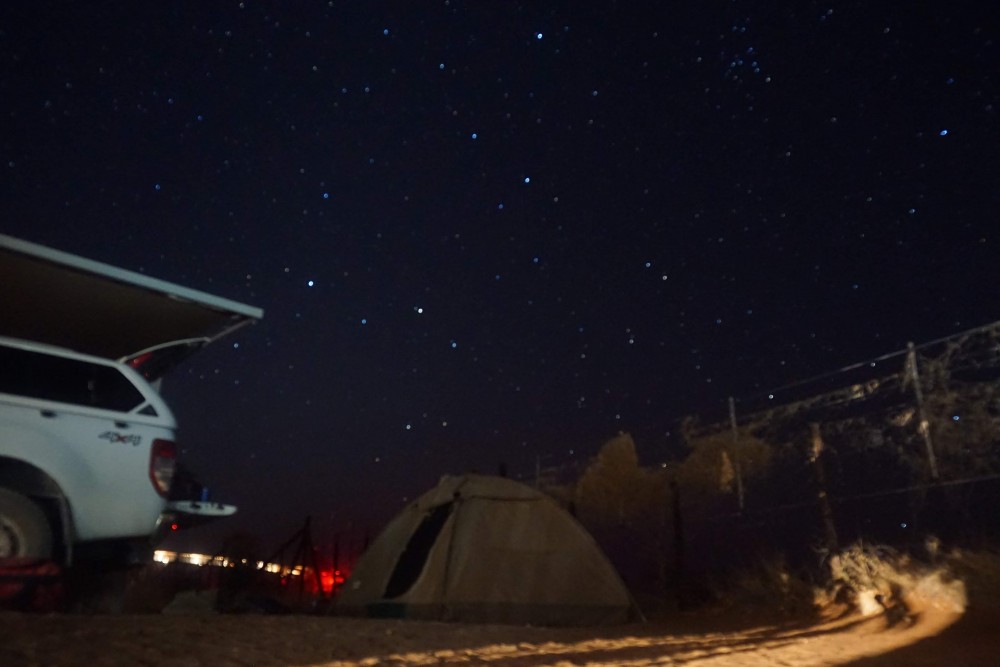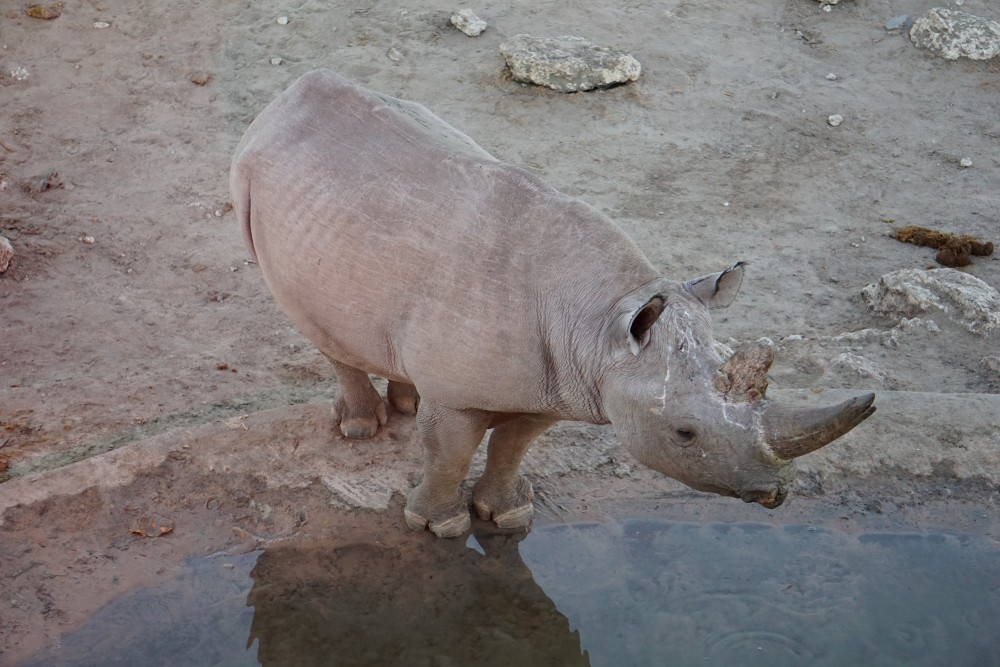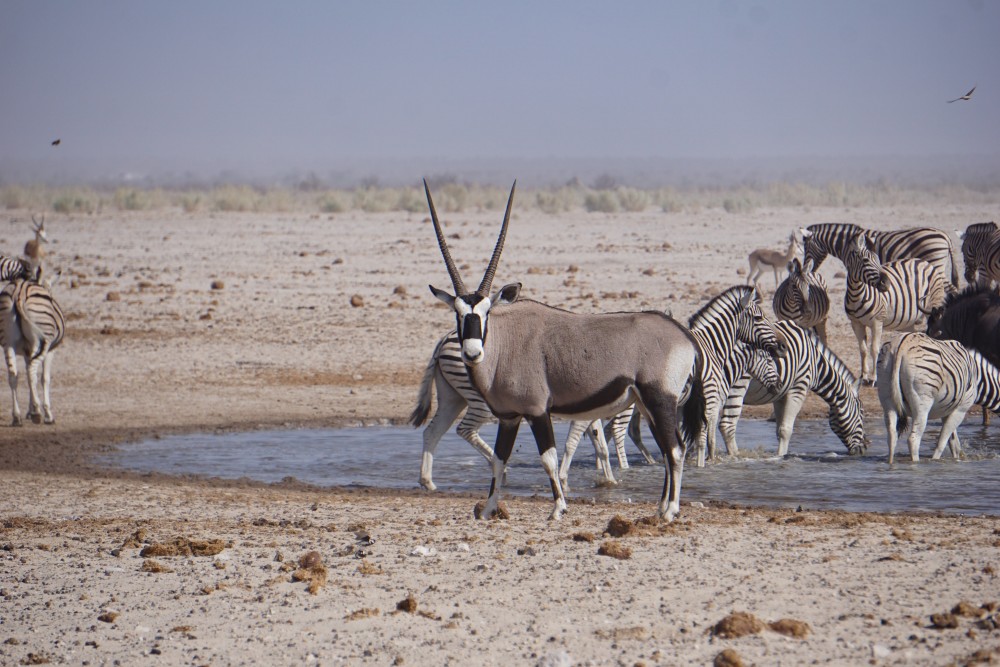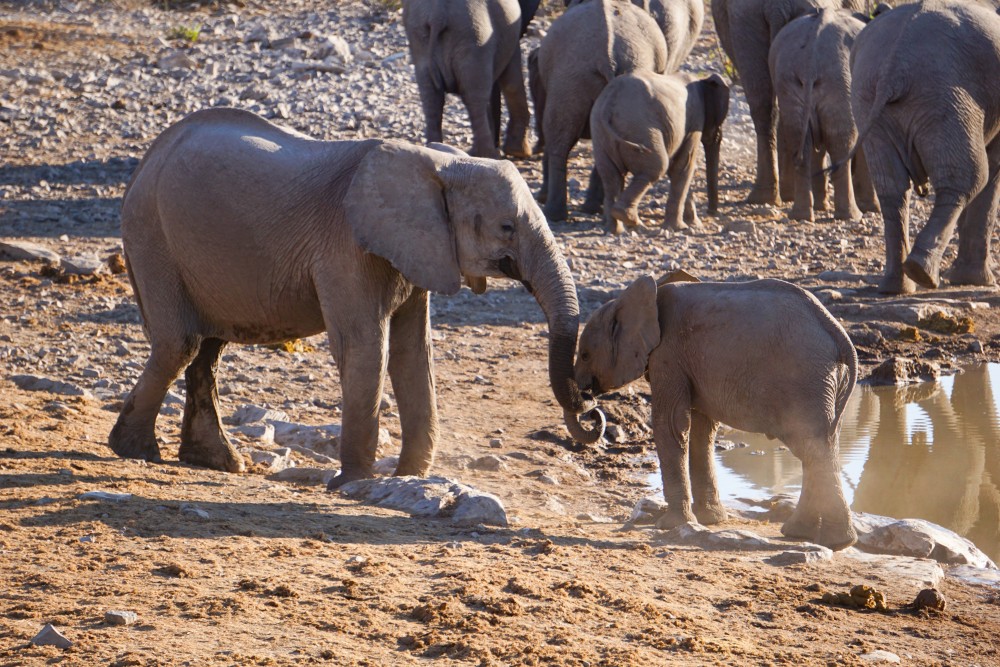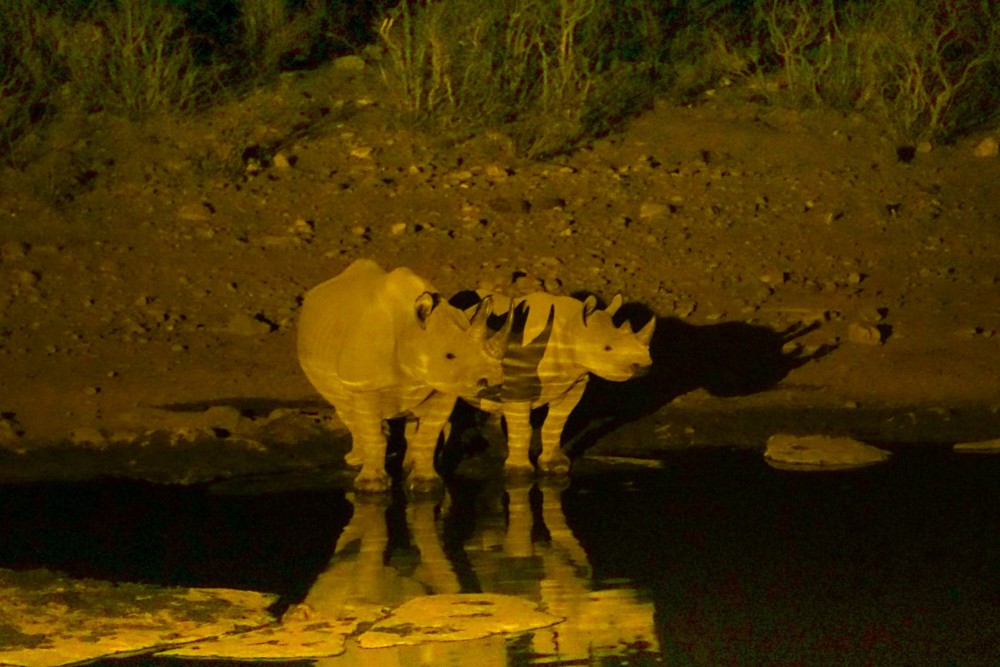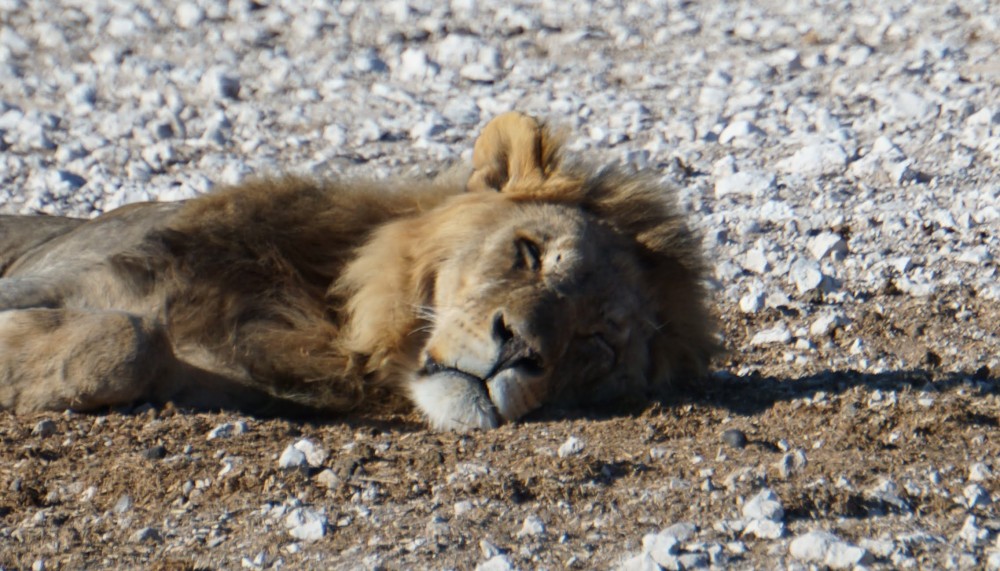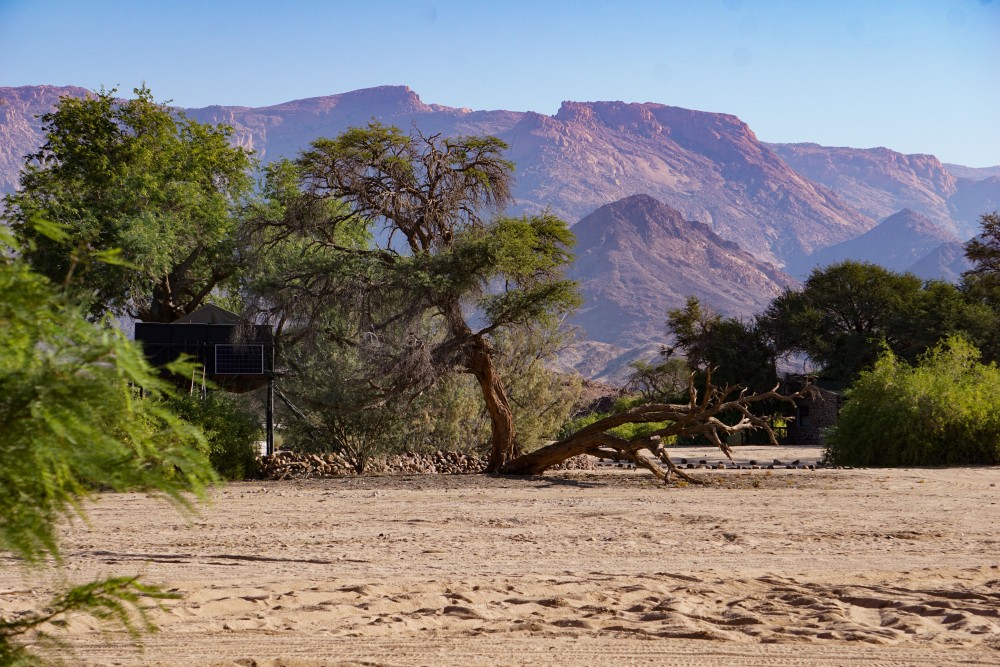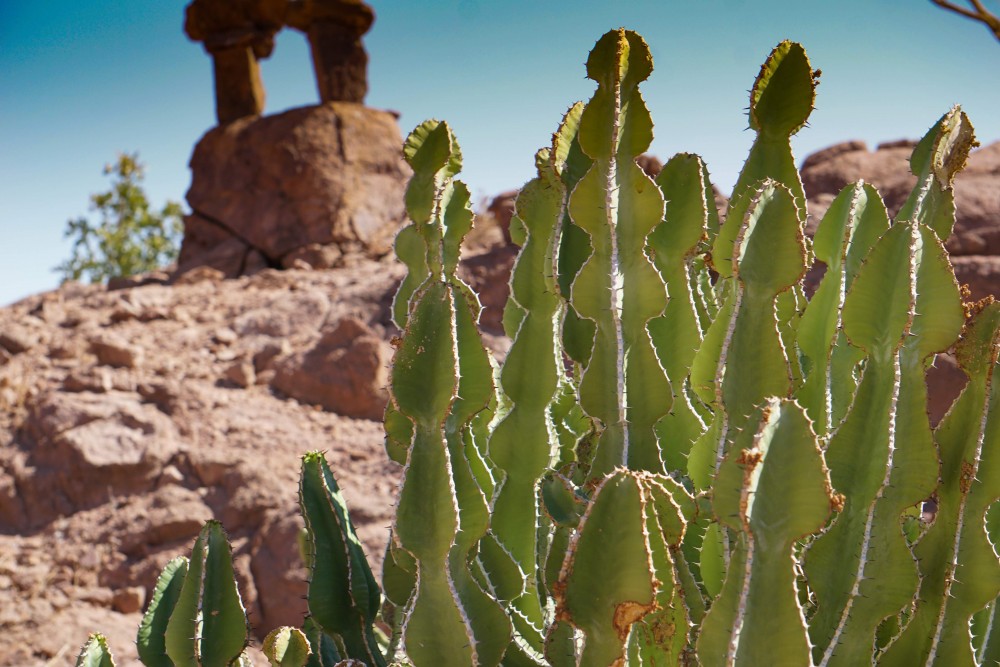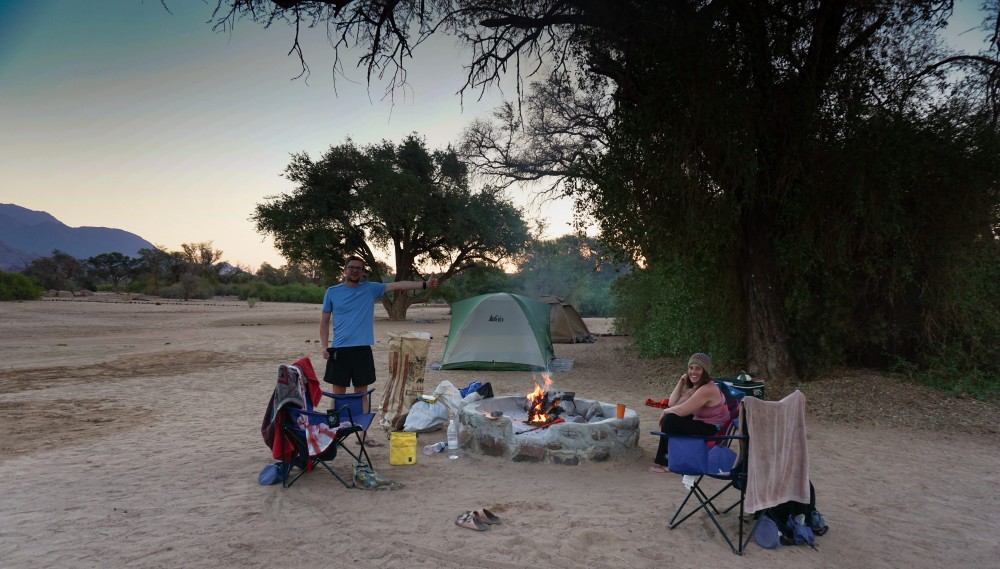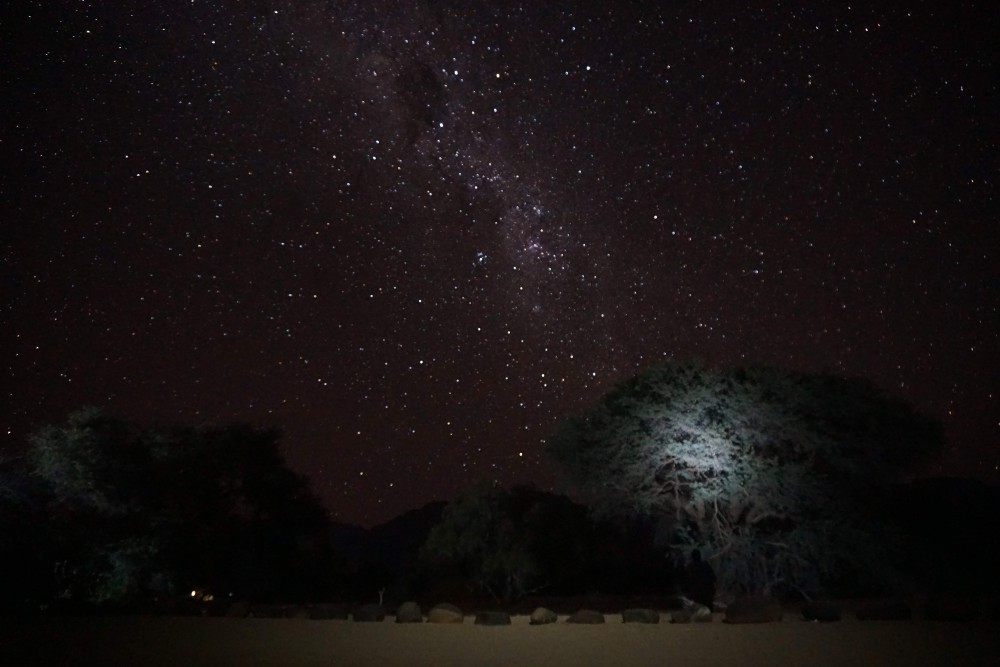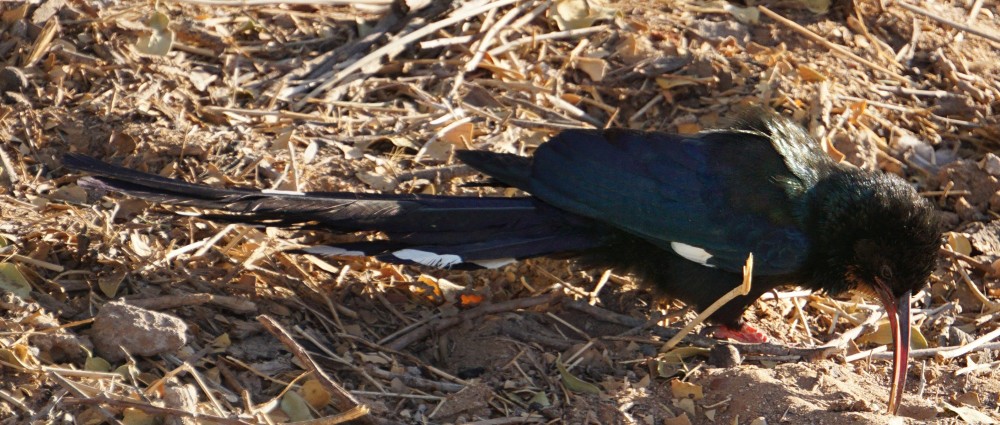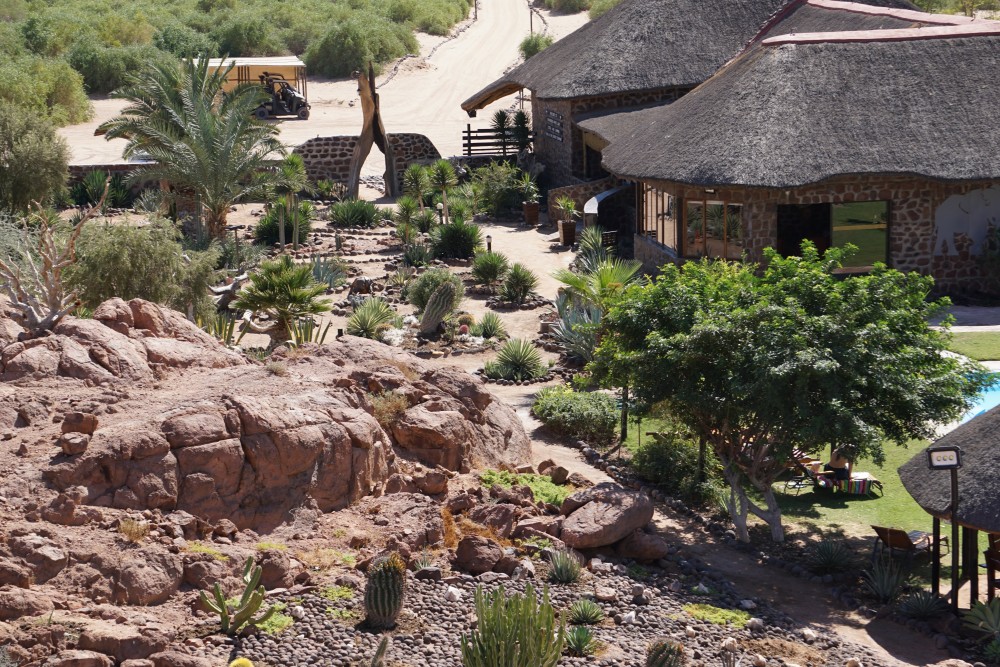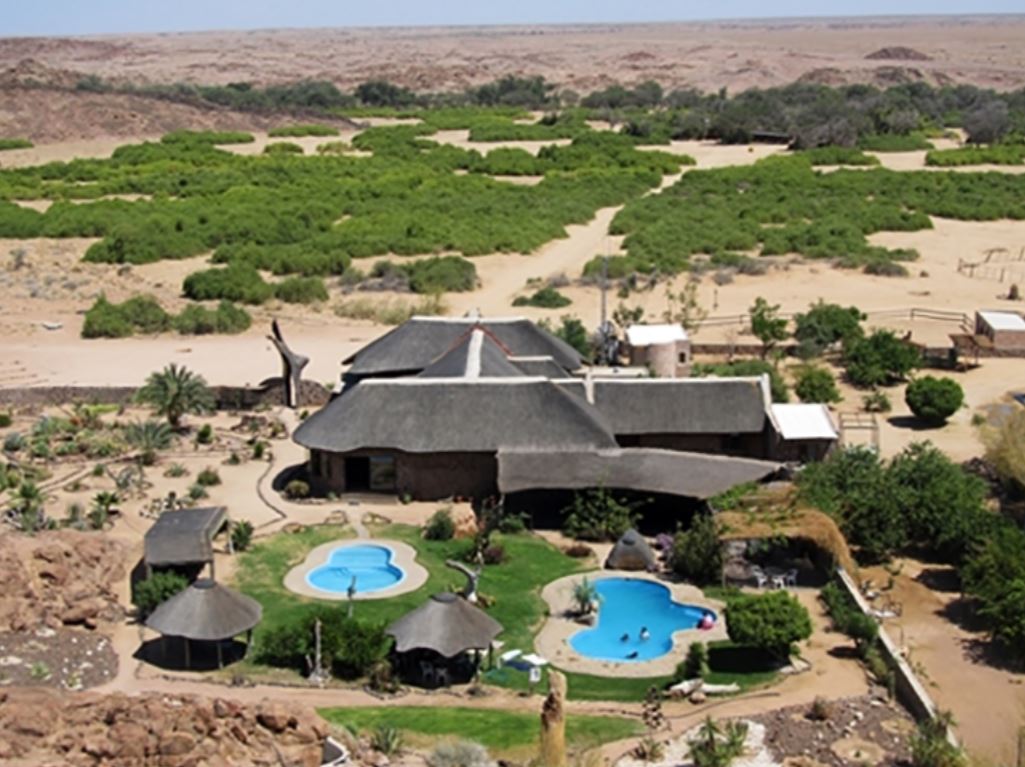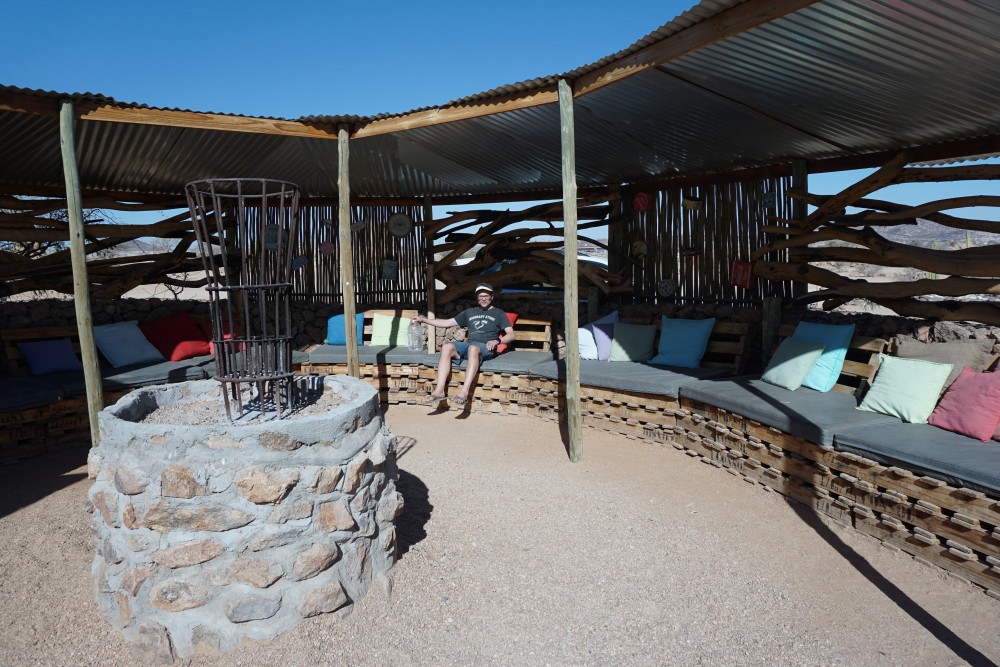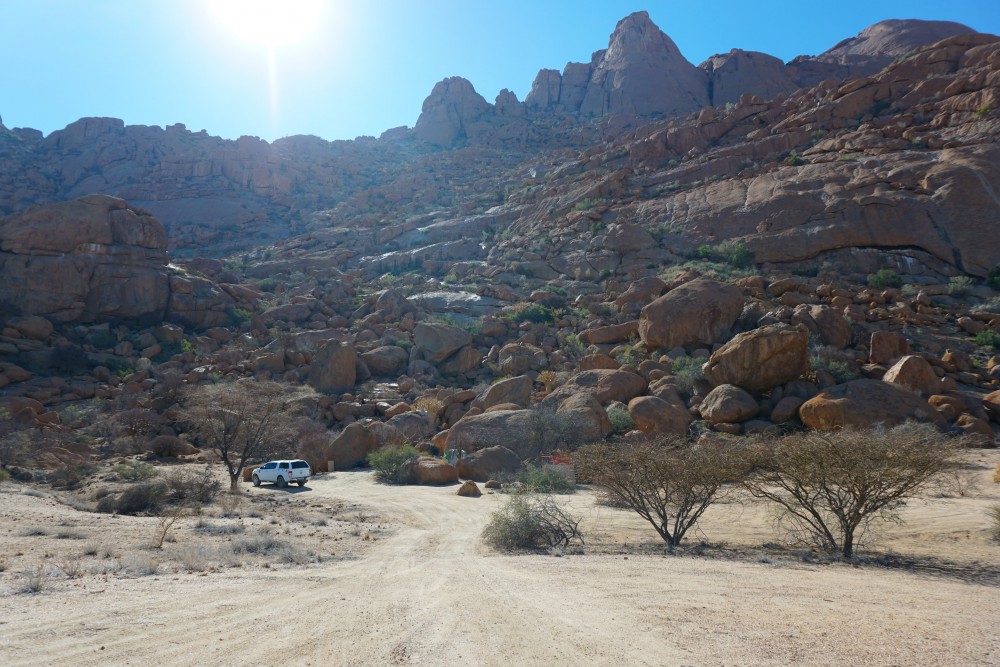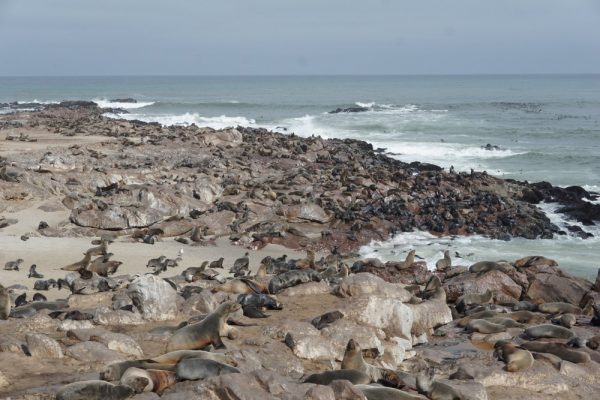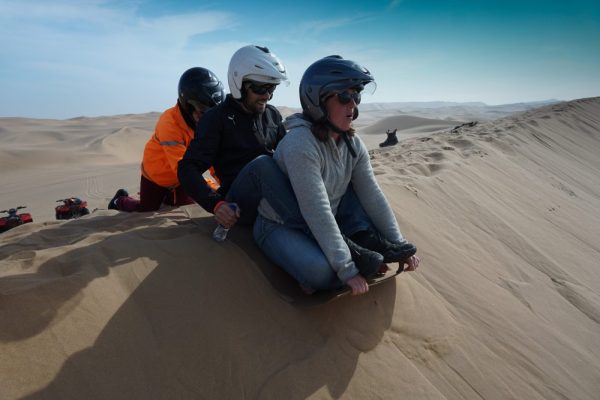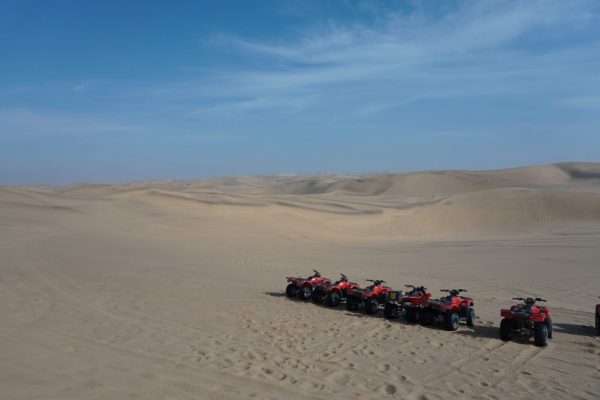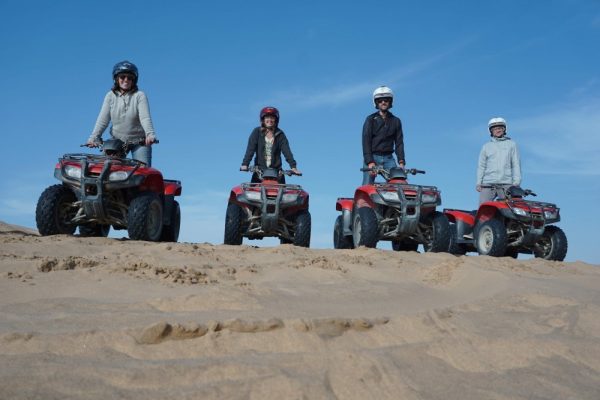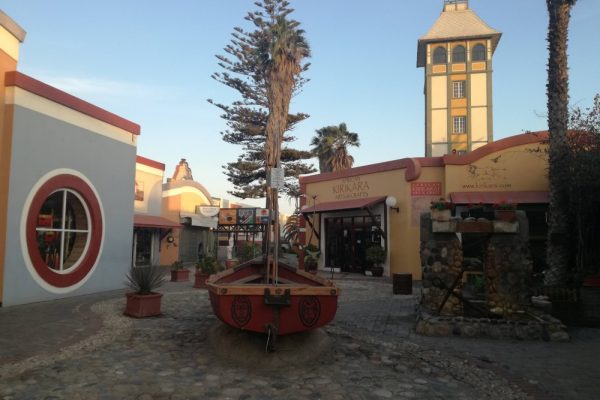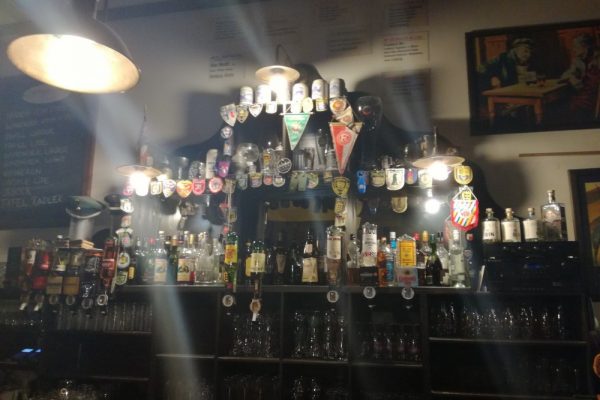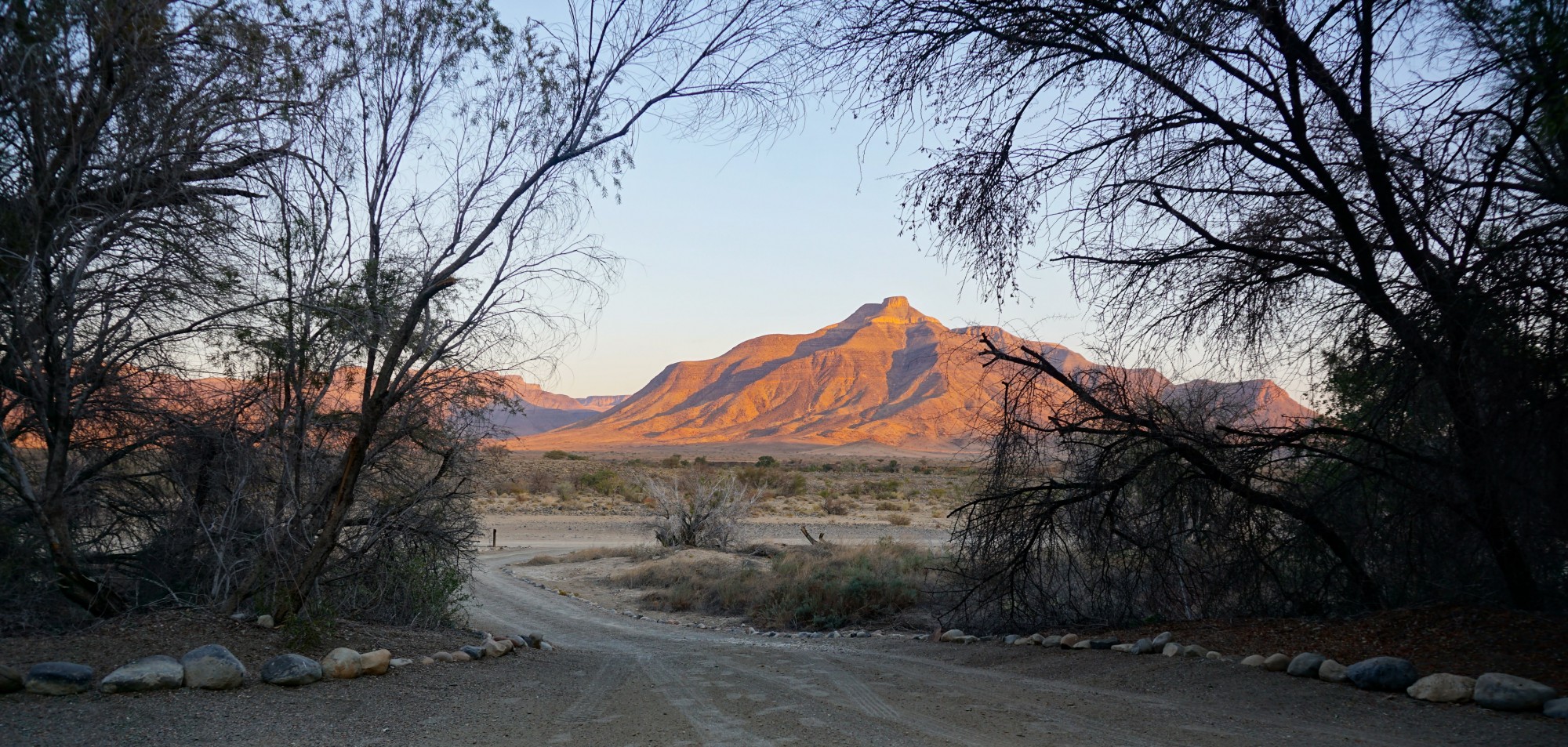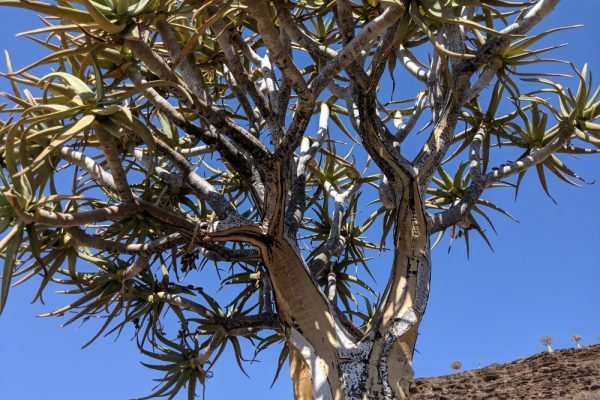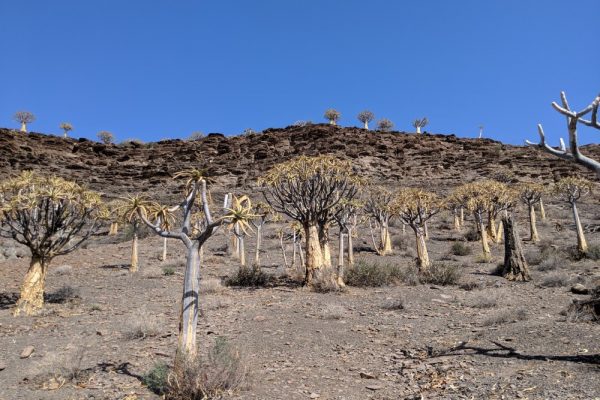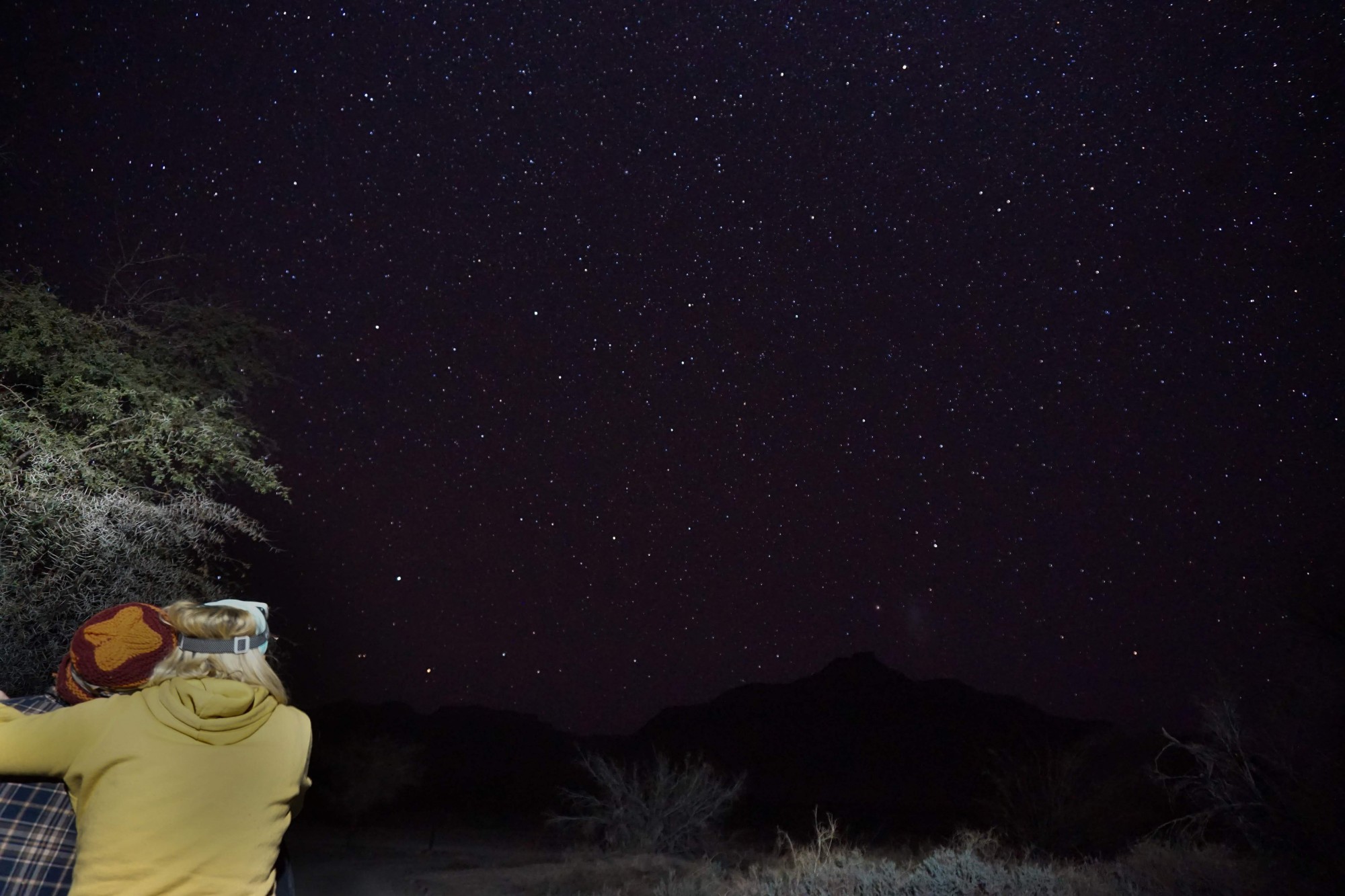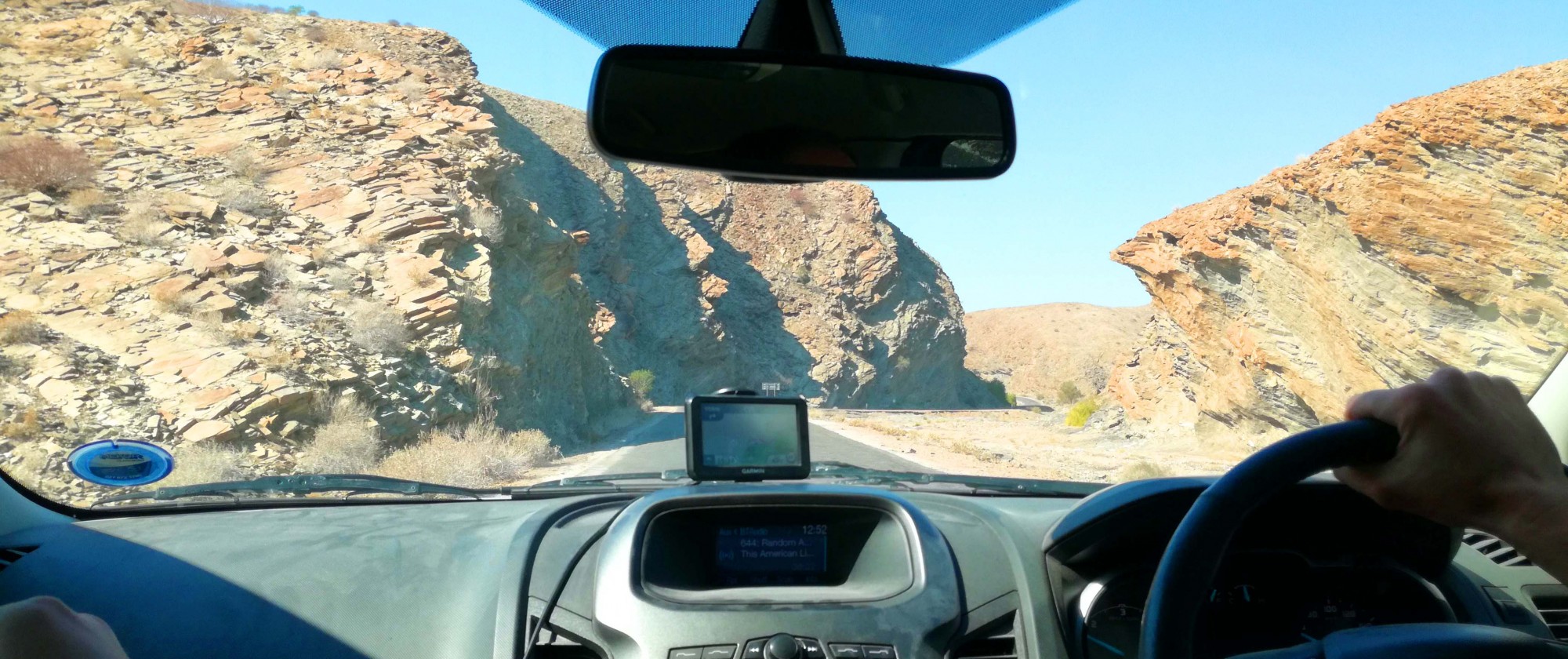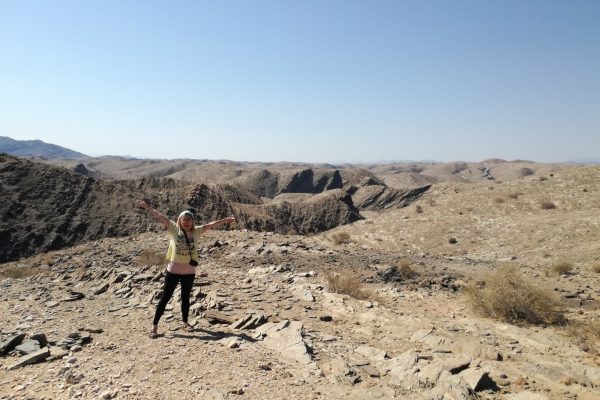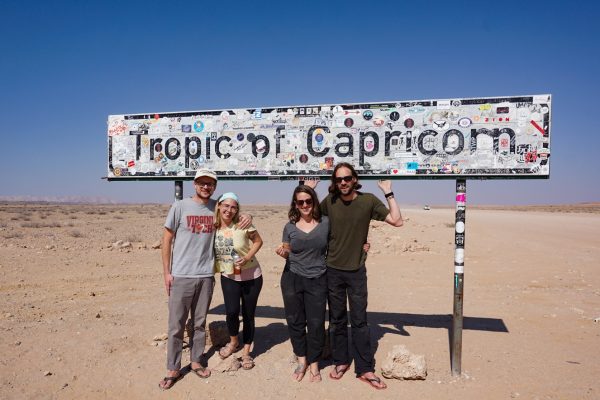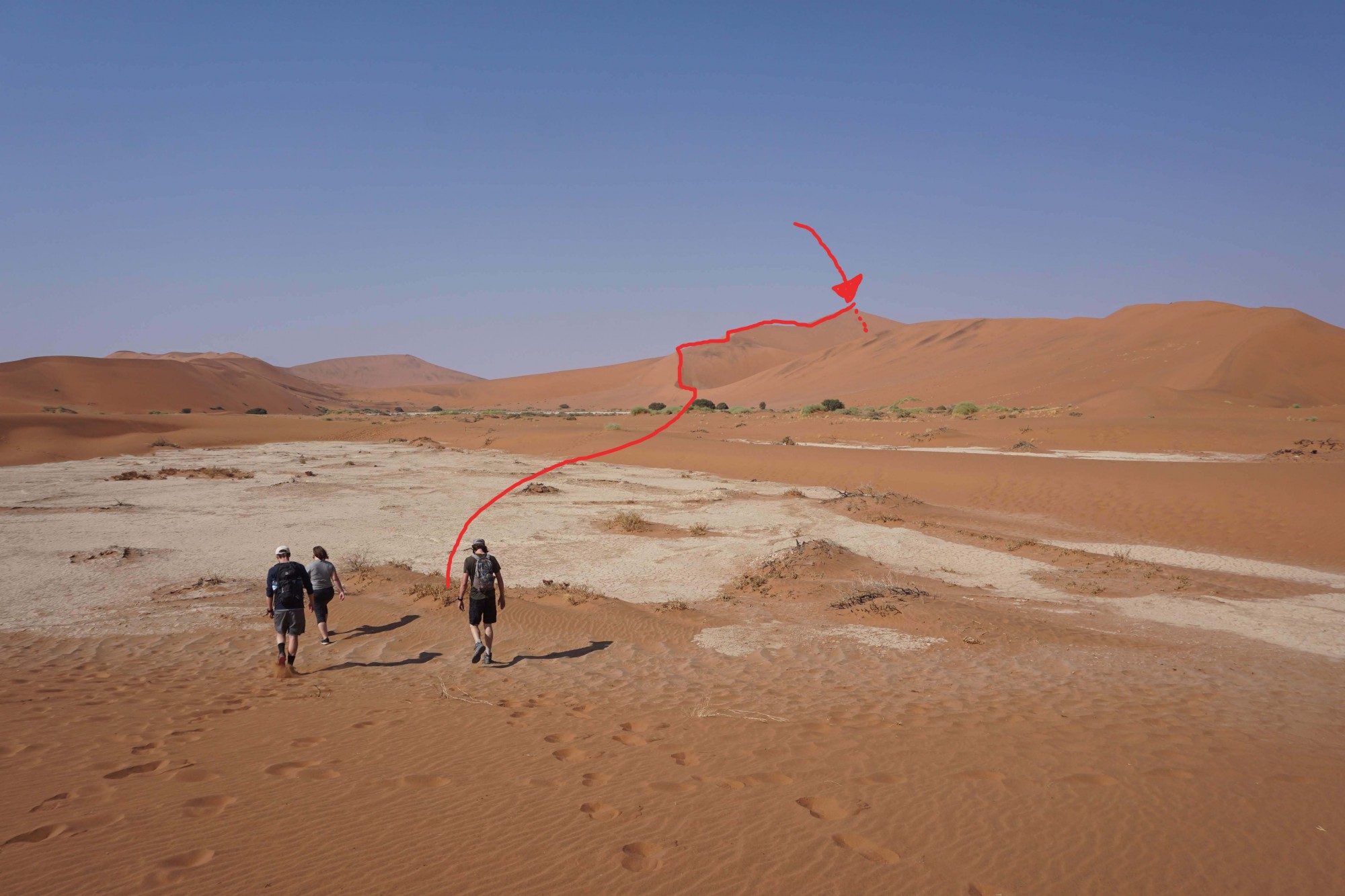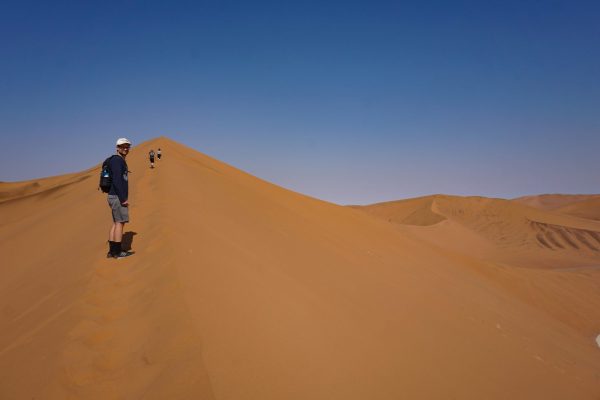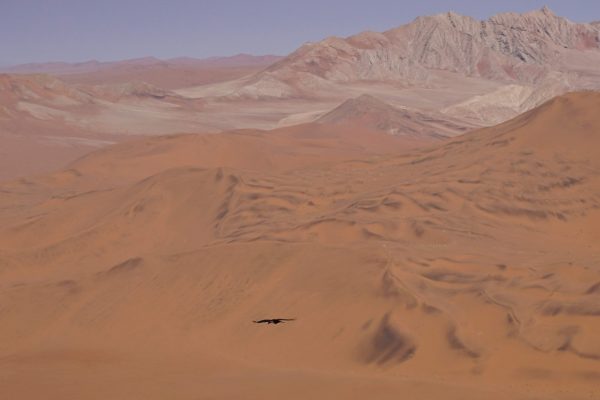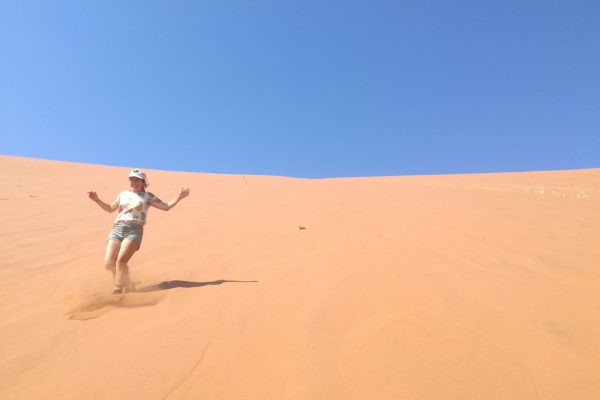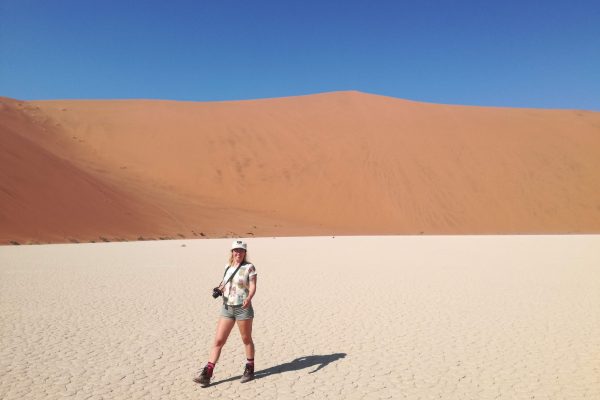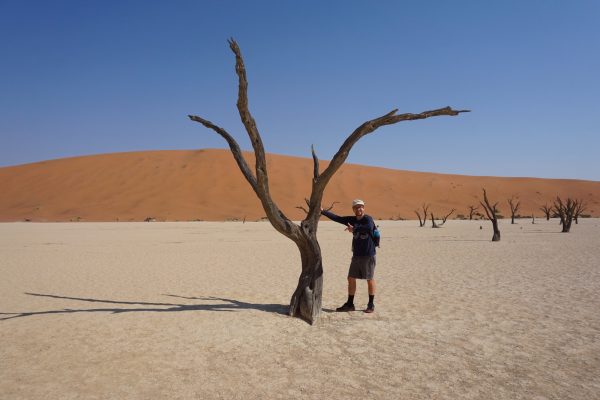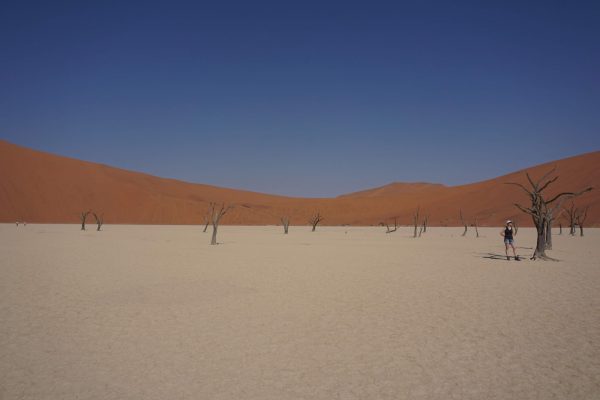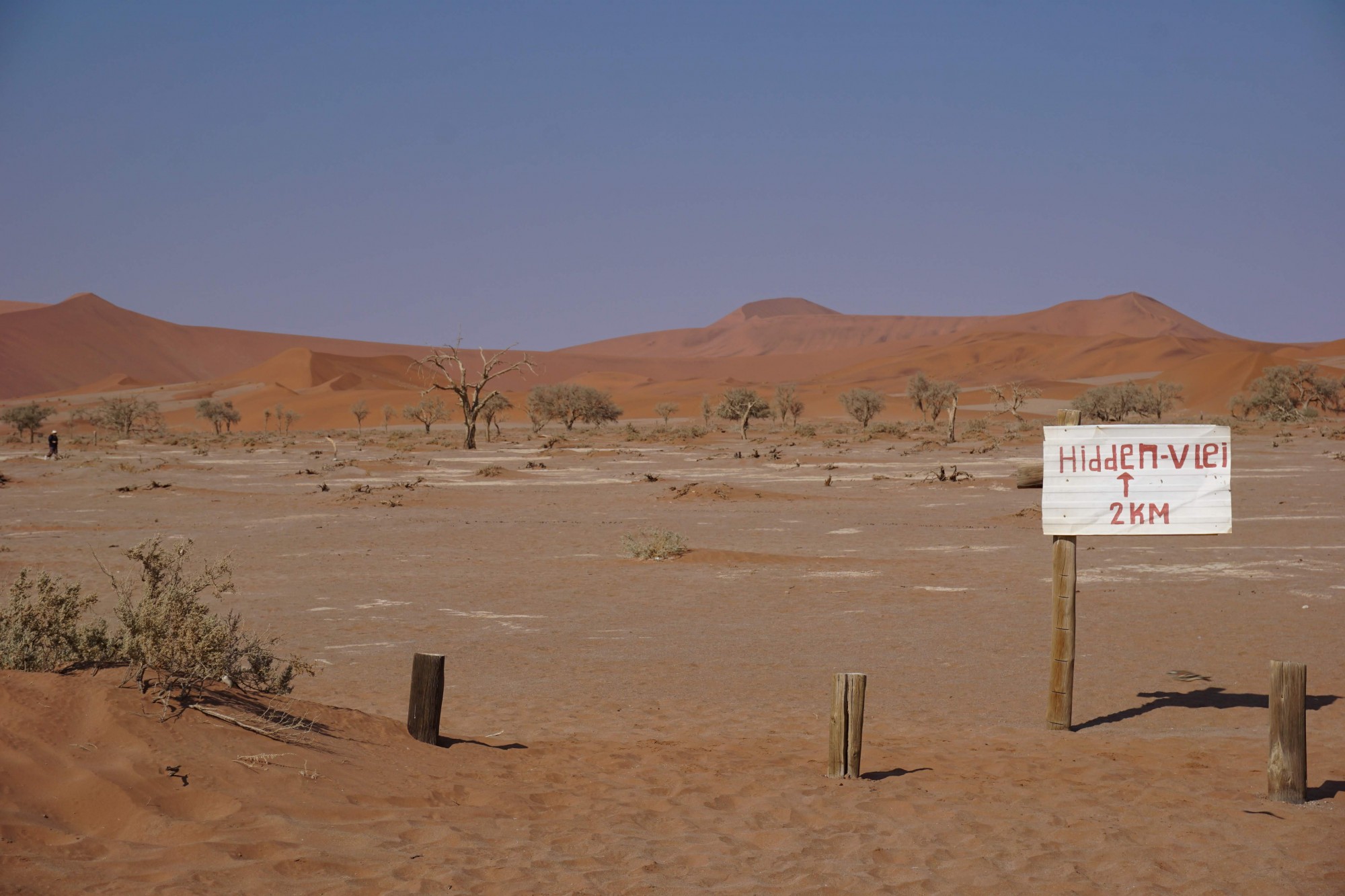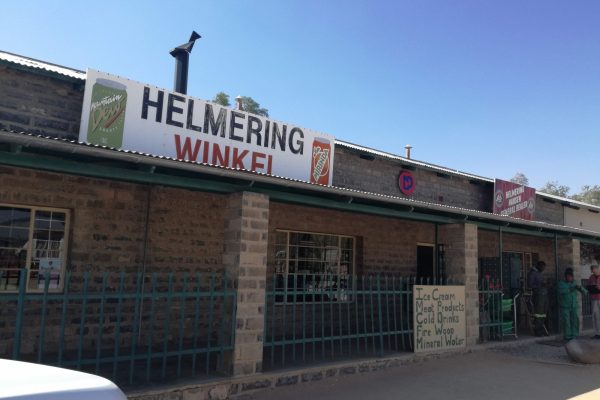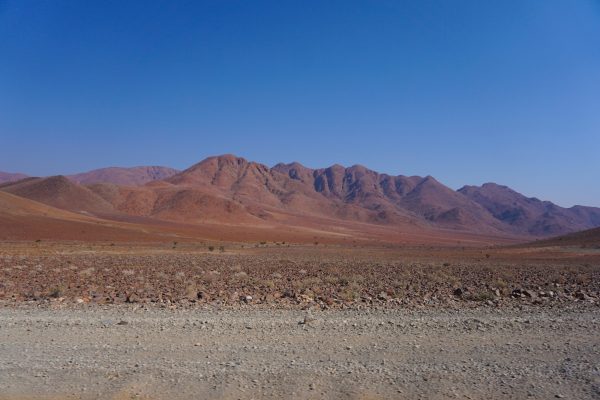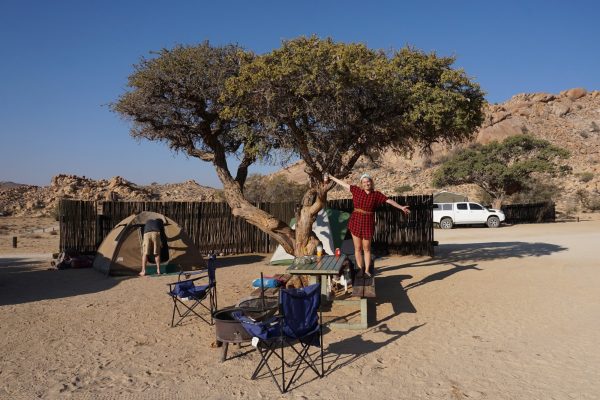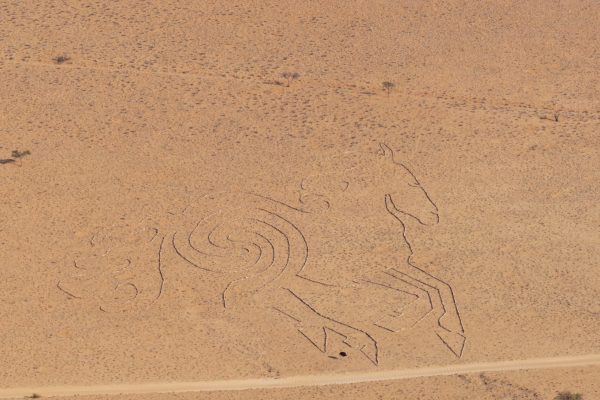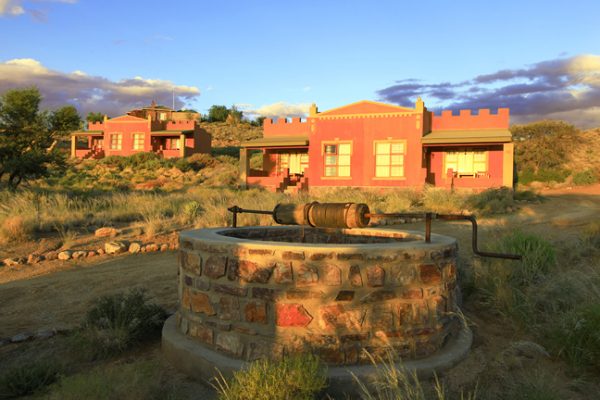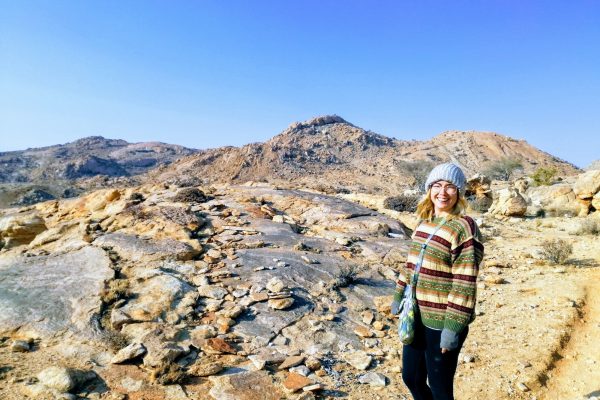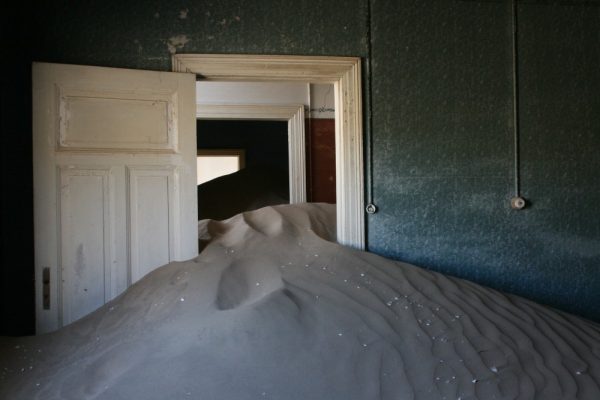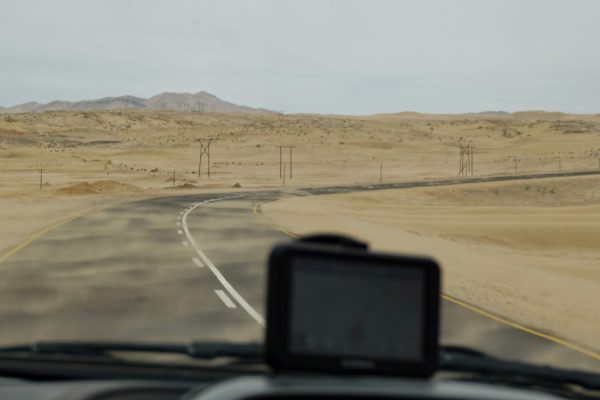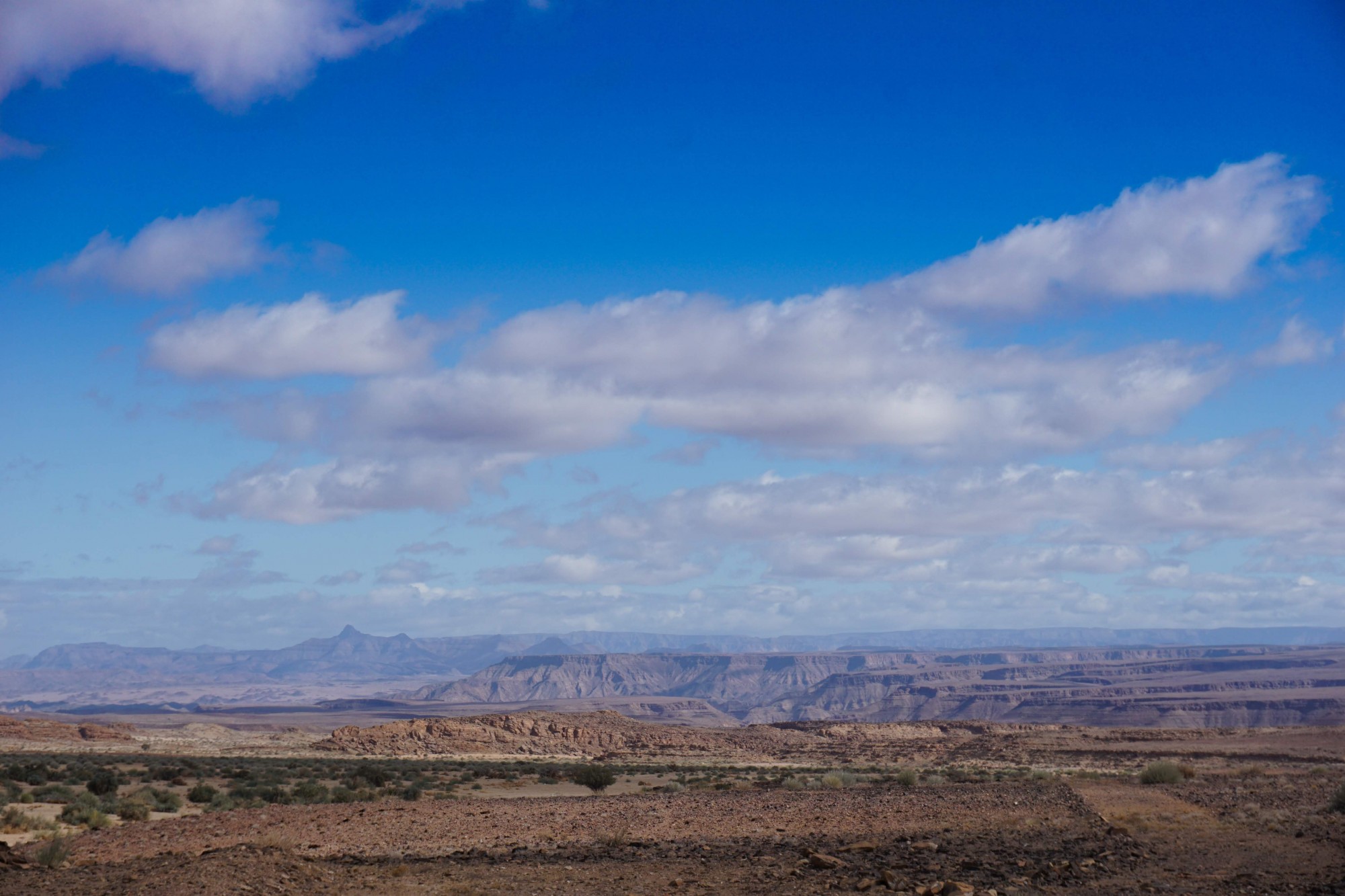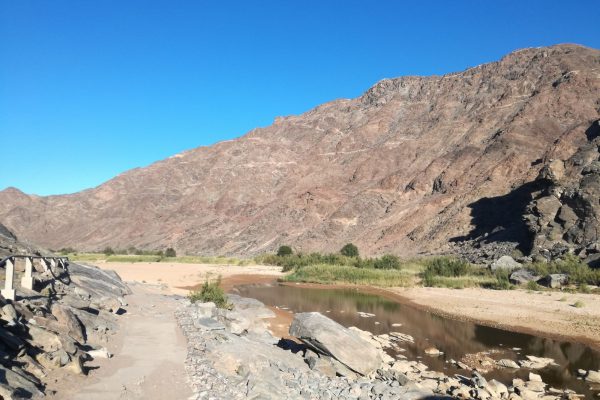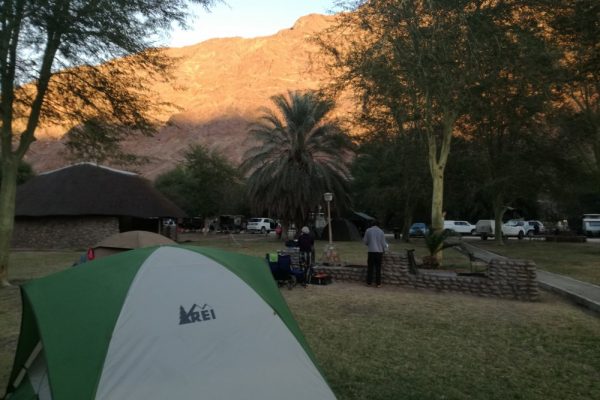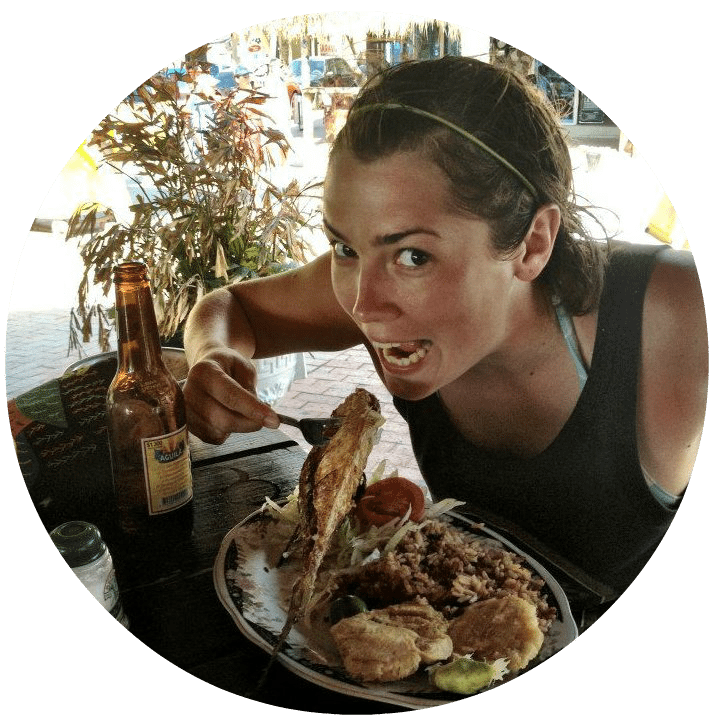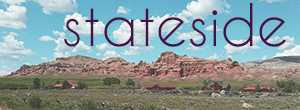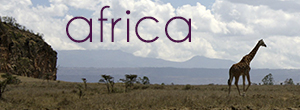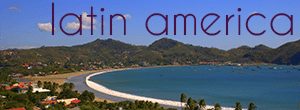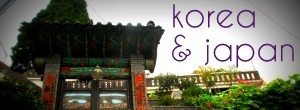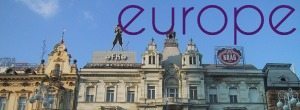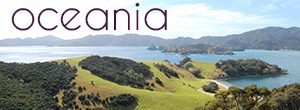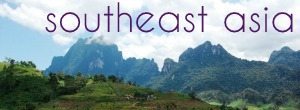Our Namibia road trip was unreal. Namibia is the most surreal, otherwordly place I have ever been in my life. Driving through the country for 18 days, I sat in continual disbelief. It is a country that is almost completely empty, it is completely desolate, and yet, there is still diversity in its desolation. With each new landscape you enter into, you wonder how it was even formed in the first place. How did those rocks get piled up in the middle of this wasteland? What wacky geology was at work here? Why is there a house 100 miles from anything? How do people even live here? How long has it been since that oryx found water?
It’s stark and jarring and endlessly fascinating. It is an empty country that requires patience, that requires a love of being in a car for days on end, and an appreciation for the people you’re sharing that car with. There are no towns, no shops, no gas stations, for hundreds of miles. In fact, planning out your petrol is one of the most important parts of planning your trip…if you run out, you may not see another car for hours or days. And there is no highway exit to walk to if you do.
Namibia is a hard country, hard to drive, hard with desert, dry and thirsty and spectacular and alien. It is a place I couldn’t have imagined if I tried. From the “great white place” of Etosha to the towering clay-red dunes of Sossusvlei, Namibia blew me away, in a different way, each and every day.
The Breakdown
Since we are currently based in Cape Town, South Africa, our Namibia road trip probably looked a little different than yours will, but no worries! Other than the loooong drives to and from Cape Town, the rest of the info will help those flying in and out of Windhoek (pronounced VINDhok).
Without further ado, here is the Namibia road trip itinerary we did. We moved incredibly fast to cover this much ground, and I would have extended this to three weeks if we could have. Most places we stayed just one night, and there was a lot of driving between each place.
Please note that camping costs below are per person per night and are updated as of December 2019, so the prices listed below are mostly more than what we paid back in June. With four of us instead of traveling as a couple, we definitely saved money, especially with the cost of petrol. Also, one of the most expensive parts of road tripping Namibia is spending US $100 a day on a 4×4 truck for the crazy dirt roads. Luckily, our one friend is from SA and has a truck, so we got to ride in that for free (with the small cost of fixing two flat tires and replacing his windshield after it was cracked by a piece of gravel). It pays to travel local 🙂 Also note that driving times may be much longer if you are renting a sedan or you aren’t comfortable driving on sandy roads. Michael was an expert, and was able to drive much faster than many of the other cars we saw. All prices are listed in Namibian Dollars, which is pegged to the South African Rand.
Namibia Road Trip Stops
Mariental
Waterberg Plateau
Etosha National Park
Damaraland
Spitzkoppe
Swakopmund
Sossusvlei
Aus / Luderitz
Ai-Ais / Fish River
Namibia Budget Breakdown
Comfort Level: Super Budget – All camping with a few meals out
All-In Budget for me and Huddy: N$19,400 (USD $1,309)
Accommodation: N$7,349 (USD $496 per couple)
Car Rental: $0 ~ Thank you, Michael!
Petrol: N$5,029 ~ (USD $339)
Actual Spending: N$28,620 ~ (USD $1932)
Amount Over Budget: N$9,220 (USD $622! YIKES!)
OK…so I clearly didn’t do very well budgeting for this trip. Let’s start with where I got it right. The acommodation was spot-on budget as we had everything booked in advanced. We were over on petrol by R1,500 (about $100), which is a very tough thing to estimate on a trip like this. But mostly, it was just eating and drinking. We ate at a couple fancy restaurants we weren’t planning on when it was freezing and rainy, and we either spent more on drinks (or just drank more) than I had planned. But whatevs, for 18 days for two people, I’m not mad at it! We were comfortable spending up to $2,000 on the trip overall, and we managed to stay under that.
Trip Highlights
Sossusvlei and Deadvlei…#1 hands down.
Suddenly becoming very interested in desert geology.
Being scared of riding on the dunes at first, but then gaining confidence and ripping it a bit! Just in time to head back…
ALL. THE. STARS.
The absolute wonder that a place like this exists on earth.
Trip Lowlights
Mostly that there wasn’t enough time—especially for the far north and the Skeleton Coast.
Missing the ghost town, Kolmanskop because apparently ghost towns close after lunch.
The sand infiltrates your entire body and everything you own in the desert. Be prepared for it.
We had a couple very slow days in Etosha, which is part of safari, but it’s always a bummer not seeing any animals for hours.
I won’t really talk about it on here, but I went through some shit with my best friend on this trip, and that always sucks…especially when you’re in a car for 18 days.
Oh, and smelling like that seal colony for a solid 24 hours.
Tips for Traveling in Namibia
Don’t be scared of the bumps.
The roads in Namibia are surprisingly good for being almost all gravel, and they are constantly being graded. That being said, there are still a lot of rough roads. If you find yourself on a washboard road…SPEED UP! Driving 20mph on those ridges means you’ll be feeling every bump. Try to stay at least above 40mph/60kph, if not faster.
Know your roads.
Map out all of your roads beforehand along with petrol stations and make sure your car’s tank can make it. Also, know which roads are ok for 2×4 and which require 4×4. All B roads in Namibia are tarred and good for sedans. Many C roads are fine for sedans as well. A D road is unlikely to be doable, but do your research first! Also, whatever drive time Google says, you need some padding. Better to Google your specific route and how long it takes—there are a ton of forums out there for 4×4 driving in Southern Africa in particular.
Know how to change a tire.
Don’t be those guys waiting for 5 hours for someone to drive by. Learn how to change a tire before you go, and if you’re renting, double check that the car has everything you need to do it.
Stock up whenever you stop.
Namibia is a country of nearly nothing everywhere you look. When you do find a town, it may just be a small shop with biltong and dry snacks, but no fresh fruit or veggies. Keep your car stocked with snacks, water, and anything else you might need. You may not see another store—or the next store you do see may be painfully understocked. While you’re there, you might as well fill up with petrol.
Don’t rely on cell service.
Because you’ll barely have it. You can buy a SIM card for cheap when you arrive, but it won’t provide reliable service unless you’re near a town. Download offline maps (try maps.me and google maps), print out any confirmations or directions you may need, and maybe actually know how to read a real road map!
Get a map.
I downloaded the road map from HERE for €4.99 which is totally worth it as it has detailed info on every sector of the country including road conditions. TBH, though, I’m not sure the last time it was updated. Luckily, our driver also had a GPS system with all of our routes uploaded. Some of the road signs when you get to an intersection are so old and worn by salt and sand, you can’t even read them!
Dress for all the seasons.
Just look at my photos below and you’ll see me in everything from tanks and shorts to triple-layered sweaters and beanies. And RAIN in the dry season. Deserts are always fickle, and Namibia is no exception. As Scar would say, Be Prepared!
Namibia Road Trip Itinerary
Day 1: Cape Town > Bastion Farmyard, Mariental
Drive Time: 12+ Hours, 1200km
N$171 per person
We chose Bastion Farmyard as it was basically the farthest we could get from Cape Town in a single day. The campsite was lovely with private ablution blocks (bathrooms) at each site, and the owners were super friendly. If you need a place to break up the drive to Etosha, I highly recommend it!
Day 2: Waterberg Plateau Campsite
Drive Time: 5 hrs, 540km
N$250 per person
The Waterberg Plateau isn’t a must-see stop in Namibia, but it’s a great way to break up the drive up to Etosha north of Windhoek, and the plateau is pretty stunning in itself. It’s a lush oasis jutting up from an otherwise flat landscape. The campsites were nice, the birding was incredible, and we even had a porcupine come be our camp friend! His name is Charles. There are a few lovely hikes on the property, but we weren’t there long enough to do the panorama hike with the real views from the plateau. Please go do it and tell me how it is!
Day 3-6: Etosha National Park
Drive Time: 4 Hours, 316km (plus LOTS of safari driving around the park)
Onguma Tamboti Luxury Camp – N$255 per person
Etosha Village Camp – N$200 per person
Olifanstrus Camp – N$389 per person
Halali Camp – N$333 per person
Etosha is a wild place. It is dust and ghosts and literally means “the great white place” referring to the massive salt pan that lies at its center. Etosha is seeing a single springbok alone in a vast, flat plain with nothing else in sight. It’s seeing the skeletons of bushes adorned in the white dust that coats everything when you are here. It’s seeing single file lines of zebras trudging lonely across the desert in their neverending search for water. It’s wondering how anything manages to survive in a place so desolate.
OK, enough poetic musings. Down to brass tacks. We spent four nights in Etosha (pronounced eh-taw-shah, not eh-toe-shah) and had to stay in FOUR different camps because this place books up quick, and we were also on the heels of the Put Foot Rally Racers, which is basically hundreds of people roadtripping around Africa. My advice…book Etosha at least six months in advance, or as soon as you think you want to go. Stay at Halali or Okaukuejo Camp, maybe two nights in each. How do you pronounce that last one? OH-ka-KOO-yoo. I know. It feels wrong. I’m pretty sure it morphed into oh-cow-kwa-kwee-juice by the time we left.
Olifanstrus is a pretty sweet camp out in the western half of the park that has a great waterhole with a two-storey hide, but it does take a full day of driving down a pretty desolate stretch of road to get there. This part of the park was only opened in the last few years and Olifanstrus is only open to campers. There are no huts or bungalows here. It’s actually so recent, Google Maps doesn’t even show it as part of the park! It’s surrounded by the bush and feels incredibly intimate. Definitely recommended if you’re going to leave from the western side of the park, but keep in mind the long drive time. Like the idiots we are, we booked a night out there, then drove all the way back to Halali for our last night. But that’s all that was available! Side note: Halali has an amazing night-lit waterhole where you can see the drama of the bush unfold!
Onguma Reserve is directly outside of the eastern gate of the park, had wonderful campsites, a lovely pool and office area, and even offer their own game drives and a water hole you can view from the camp bar & restaurant. I would definitely stay here again. Etosha Village is just outside the main/central gate, and was a little weirder. They put us in a massive group camp for 30+ people, but whatever. Their pool/reception area was lovely and it was very accessible to the park. They also sold really good bread at their front desk. Seriously, pick up a couple loaves on your way out, it’s better than anything you’ll find at the stores around the park.
ETOSHA TIP: TWO of our camps got attacked by honey badgers, so be sure to put up all of your food!!! They’re crafty bastards.
ETOSHA TIP #2: If it’s dry season and you have the time, spend one whole day just sitting next to one of the waterholes at camp with a book. The animals come and go, and it will be empty a lot of the day, but it’s so cool to watch the dynamic of the bush while you relax with an icy cold cider!
Stock Up in Outjo
There is a great, fully stocked market in Outjo along with a nice little town, a cafe, and a bakery. After trying to buy groceries in Etosha (just don’t) it was a welcome relief! If you’re coming north, stop in Outjo before you hit the park. If you’re driving South, this is the best grocery store before Swakopmund.
Day 7-8: Brandberg White Lady Lodge
Drive Time: 6 hrs, 400km
N$310 per couple
A confounding oasis in the middle of desert nowhere, this camp is the perfect place to relax by a pool, drink a few cocktails and (maybe) see some wild desert elephants—especially after the harsh, unforgiving landscape of Etosha. We didn’t see any desert elephants, but we certainly did relax. There are hikes to do, but honestly, it was hot AF, all the hikes were exposed, and sitting by a pool reading a book just seemed better. Also, awesome birding, and I finally saw the endemic violet wood hoopoe bopping around our campsite! Highly recommend this place!
Day 9: Spitzkoppe Camping
Drive Time: 2 hrs, 130km
N$190 per person
Spitzkoppe is a famous rock climbing spot, and if you’re a climber, this is definitely where you stay. However, we were not rock climbing, it was still too blistering hot to hike, so we just sat at the very cool outdoor lodge area and drank lukewarm drinks. The campsites have no water and are quite far from the main house, so it definitely wasn’t my top pick. Unless you are a climber, then this is where you come.
Cape Cross Seal Colony
Honestly, this was the craziest, smelliest place I have ever been. The seals made noises like you would never expect, and the odor is so pungent, you basically walk around gagging the whole time. That being said, it was still really cool? Like 100,000 seals is actually wayyy more than you can imagine. Just make sure you can wash your clothes after you leave. The smell stays with you.
Day 10-11: Swakopmund – GreenArt Yard Cottage
Drive Time: 2 hrs, 150km
N$580 per couple
After however much time camping, you need a place to do some laundry and feel like a human again. Especially when an African wild cat pees on your bag in some sort of territorial ownership claim.
Swakopmund is an adorable, strangely German town in the middle of Namibia, and is the second largest city after Windhoek. Here is where you will restock on everything cause it’s slim pickins in the rest of the country. Our airbnb was cute, it was a short walk to town, and the owner was super nice.
Swakopmund is also where you do all the adventure stuff like 4x4s out in the dunes. Highly recommend! Also, eat at the Brauhaus and get the schnitzel.
Day 12-13: Sesriem / Sossusvlei – Hauchabfontein Camp
Drive Time: 6 hrs, 355km
N$150 per person
Hauchabfontein was our base camp for exploring the Sossusvlei dunes. You can get closer, but honestly this camp was WAY better than the garbage camps in Sesriem near the entrance. Don’t believe the photos on their website. This remote camp was a hidden gem discovered by Michael, and was only about a 45 minute drive to the entrance to the dunes. I don’t even think they have a website, you just have to email them to book it and they check their email like once a week when they go to town. They have no internet so bring cash.
The campsites are lovely, spacious, and there is a quiver tree forest on the property. We didn’t have time to go, but went to another one in SA so here is a picture of those weird trees that are definitely worth seeing!
c14 Scenic Drive – Gobabeb/Kuiseb Pass
After leaving Swakopmund, pop into Walvis bay and head out on the C14 (a good gravel road). Once again you’ll be absolutely floored how the landscape could change so much…and then it changes again. Wanna nerd out on precambrian geology??? ME TOO. After you leave the pass, you’ll run into the second (and better) Tropic of Capricorn sign, so be sure to bring a sticker to leave your mark!
Namib-Naukluft National Park
Sossusvlei was by far the most stunning part of the trip. Hiking into the deadvlei was an experience that is unmatched in my entire life. If you go to Namibia, this is the #1 must-see in my opinion. Most cars can drive most the way into the dunes, but the last little bit to access deadvlei requires a 4×4, and you need to be comfortable driving through thick sand. It’s not easy, and I’m sure many people have had to get towed out. Don’t forget to let some air out of your tires (provided you have a pump to refill them) and GO FAST! Slowing down is what gets you stuck.
If you’re not comfortable, the park offers free transfers on a tractor down to the end. Dune 45 you will pass on your way down and doesn’t require a 4×4 to access.
Big Daddy is the tallest dune in Sossusvlei at 325m, or over 1,000 ft! It took us a little over two hours from the car park and back, and it was 6.4km in total. After which I had one of the tastiest beers of my life. You can walk into the deadvlei without climbing the entire dune, but the climb is so worth it. The dunes extend around you in all directions as if this desert just magically rose itself from the earth. The best part is running down the dune into deadvlei at full speed! The sand is so soft and steep you can basically leap forward like you’re weightless on the moon! Of course, I was too scared of eating sand and tumbling down 300m, so I went a bit more gingerly, but Huddy said it was super fun. I’ve got to stop being so scared of things!
D707/c27 Scenic Drive & Helmeringhausen
Drive Time: 247km, adds about 1 hour
The C27 is a gorgeous drive through the Namib Rand Nature Reserve between Sesriem and Aus, and shouldn’t be missed. Google will probably tell you to take the C19 to the C14, but don’t listen! The D707 is a sand road and is 4×4 only, but the C27 can be driven in a 2×4.
Helmeringhausen is a tiny German town in the middle of nothing but desert and it’s clearly the most hopping place for 100 miles. They have a mildly disappointing store, but they sell cool maps and also ice cream! They even have a POST OFFICE which is open for four hours only on Tuesdays, which I am assuming makes Helmeringhausen the happening hotspot on Tuesday mornings. Get that mail, gurl!
Day 14-15: Aus / Lüderitz – Klein-Aus Desert Horse Camp
Drive Time: 7 hrs, 481km
N$150 per person
Out of all the campsites we stayed at, I was the most excited for Klein Aus Desert Horse Camp… and it did not disappoint. Tons of cool trails on the property, the campsites were large and private with tables and firepits, the bathrooms were big and had hot water, and the lodge was the perfect respite from the freezing rain we got. Yes, it rained and was freezing the week after it was like 100 degrees. The desert be crazy.
The Desert Horse Camp is just outside the small town of Aus, which is a cute little town (albeit without much) and the gateway to Lüderitz, an old mining town on the coast. The camp is named for a pack of 150 wild horses that roam the desert and can go five days without water!
As we were doing a short day hike from camp, we got to the lookout for the massive horse art made from thousands of rocks….lo and behold there was a massive rainstorm coming in…in the middle of the dry season! We watched this cloud roll in, then up the mountain we were on, until it enveloped us at camp. Namibia averages just 5.2mm of rain from June to September. This one night alone we got over 8mm! Nutso.
Easily the biggest disappointment of the trip was that we didn’t get to go to Kolmanskop, the ghost town about an hour from Aus on the way to Luderitz. It used to be a village for the diamond miners, but that industry dried up long ago. Apparently it closes at 1pm, cause like, who knew ghost towns had HOURS??? Anyhoo…here is a picture from Michiel Van Balen on Flickr cause I wasn’t allowed to get my own!
After you visit Kolmanskop, head down to the seaside town of Luderitz to get some lunch, a surprisingly dense town that has gone through many iterations of mining and fishing.
Day 16-17: Fish River Canyon – Ai-Ais Hot Springs
Drive Time: 5 hrs, 338km
N$315 per person
Our last stop was the massive Fish River Canyon, the largest canyon in all of Africa and the second largest in the world.
There is a five-day hike that traverses the base of the canyon from Ai-Ais to Hobas camp, but of course, we didn’t have time to do that. Instead, we did a day hike in and turned around coming back to Ai-Ais. Ai-Ais also has hot springs on the property, but I have to be honest—they weren’t very hot unless you were sitting right in front of the source. The campsites themselves are pretty wide open and not that great, in my opinion.
If I went back, I would definitely check out Hobas, though it is a longer trek to get all the way in there! As a reward, however, you get the best views into the canyon.
Day 18: Ai-Ais Hot Springs > Cape Town
Drive Time: 11 hrs, 800km
OK, so if you’re reading this, you’re most likely American and you’re not going to be driving from Cape Town to Fish River Canyon. But who knows. If you’re on a longer trip and you’re looking to break up this drive, try stopping in Namaqualand and Niuewoodtville on your way up…particularly if you’re going in late August/early September. This is a great time to visit Namibia and also peak wildflower season in Namaqua. I’ll be writing a blog post on how to do that soon, so remind me if you’re reading this and it is already the year 2020.
I’m really bad at blogging. The end.

